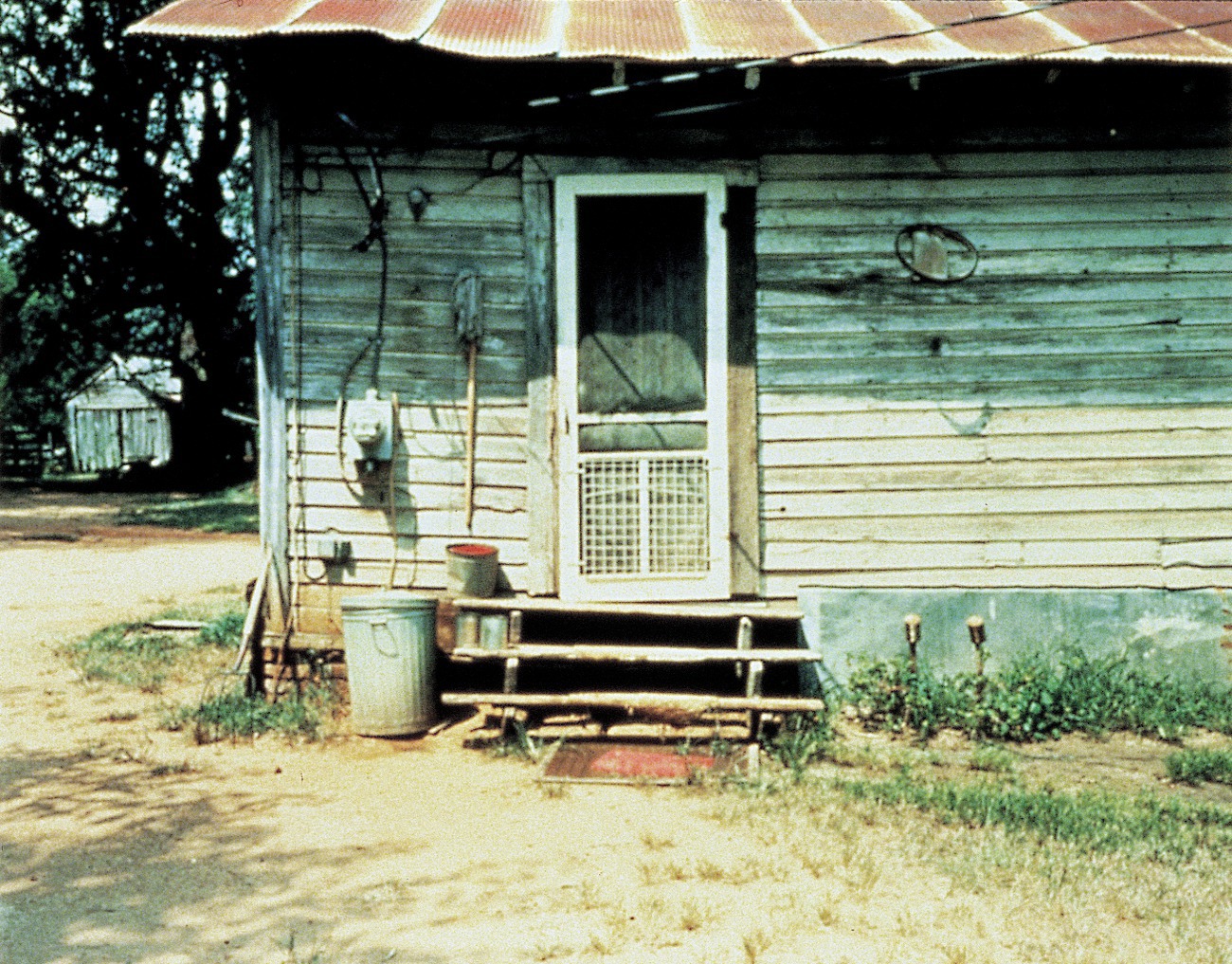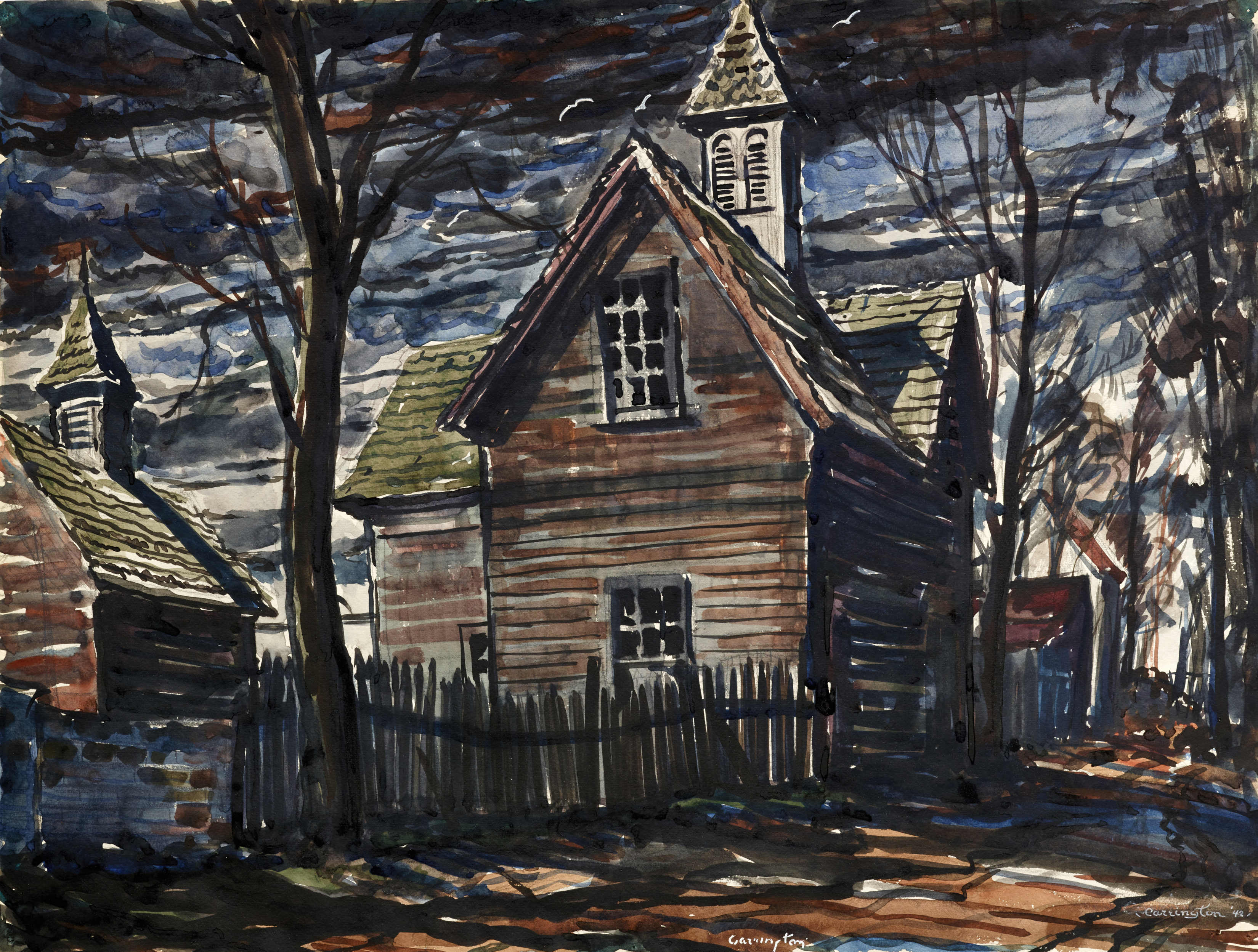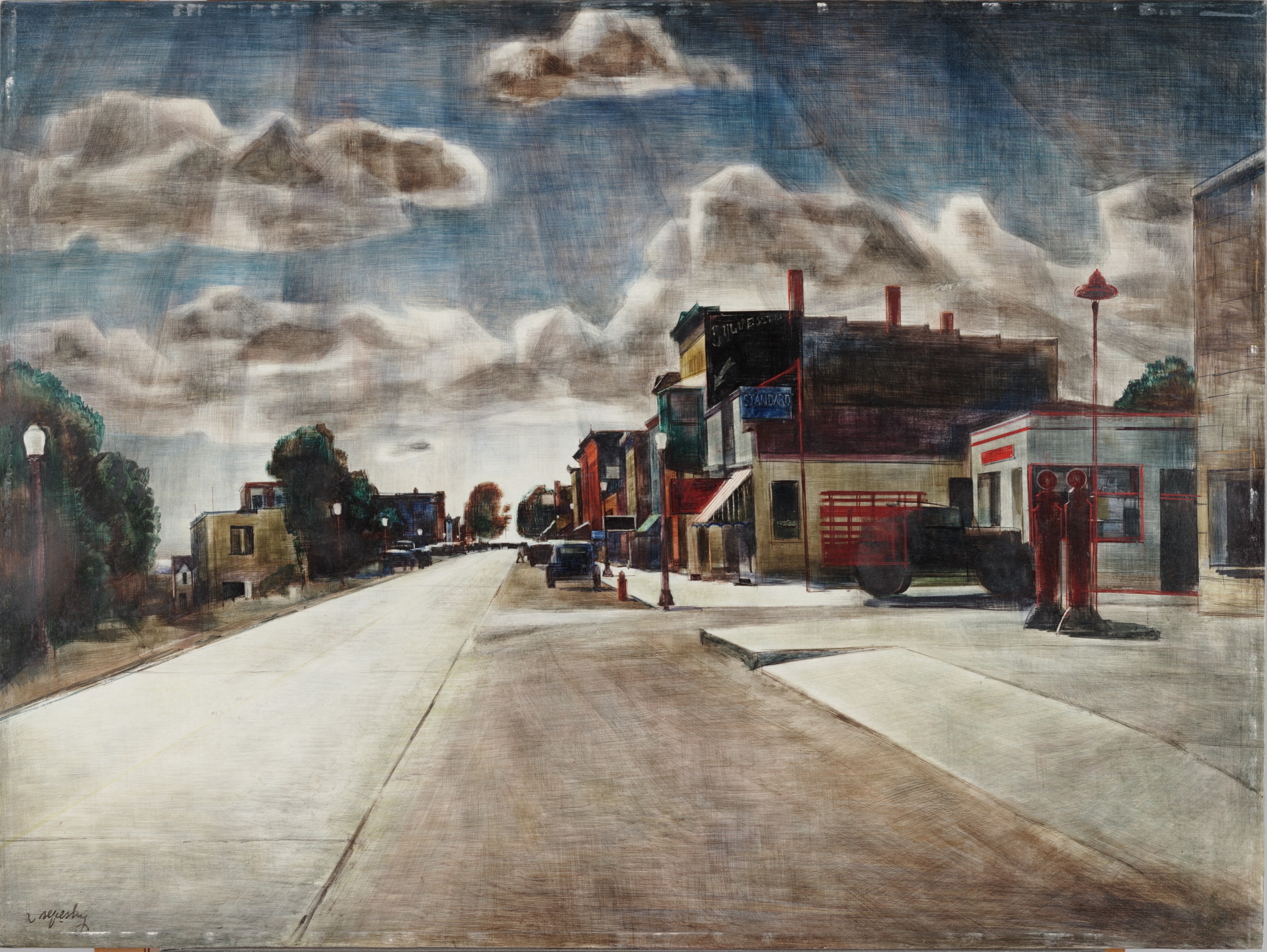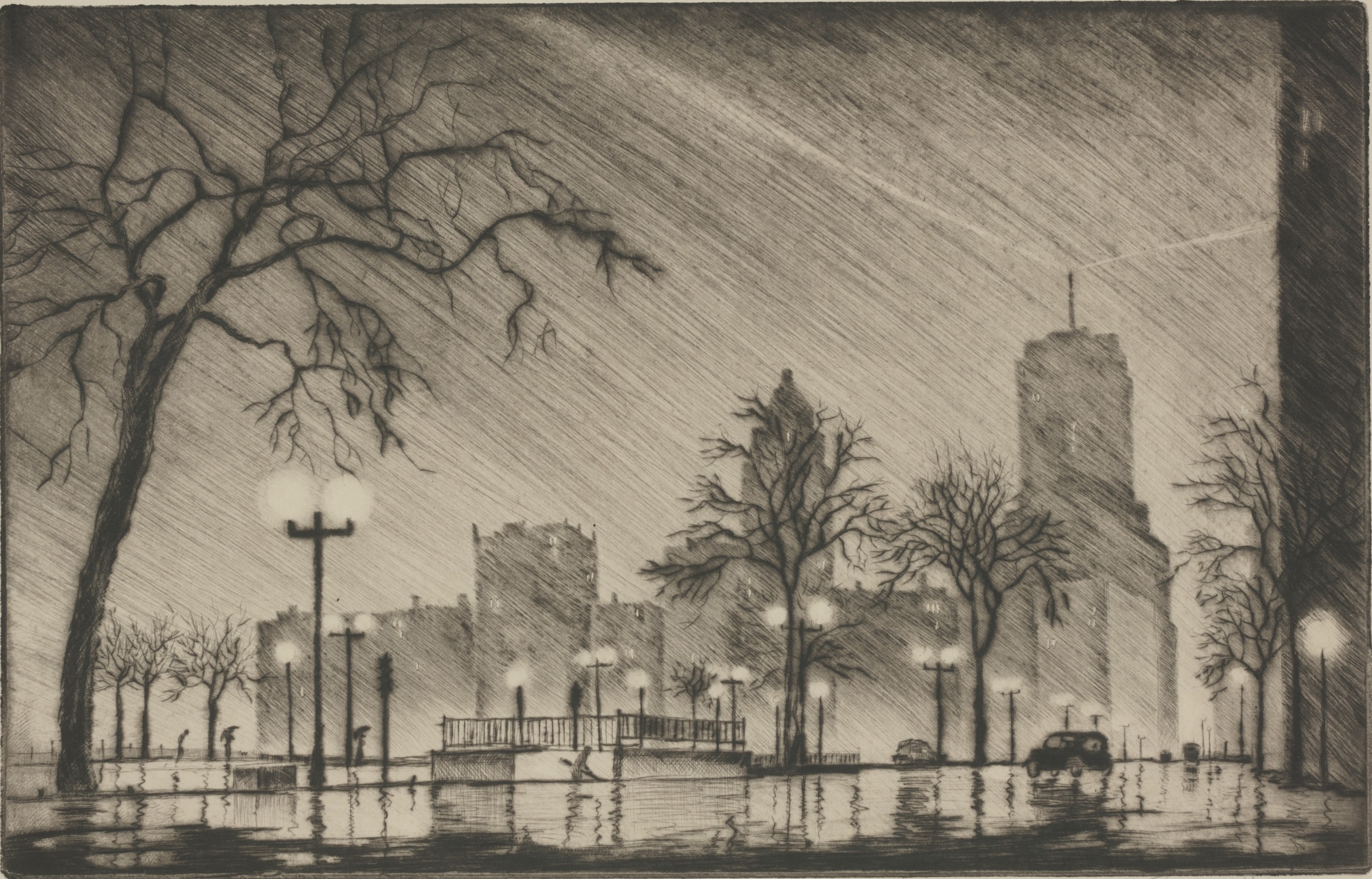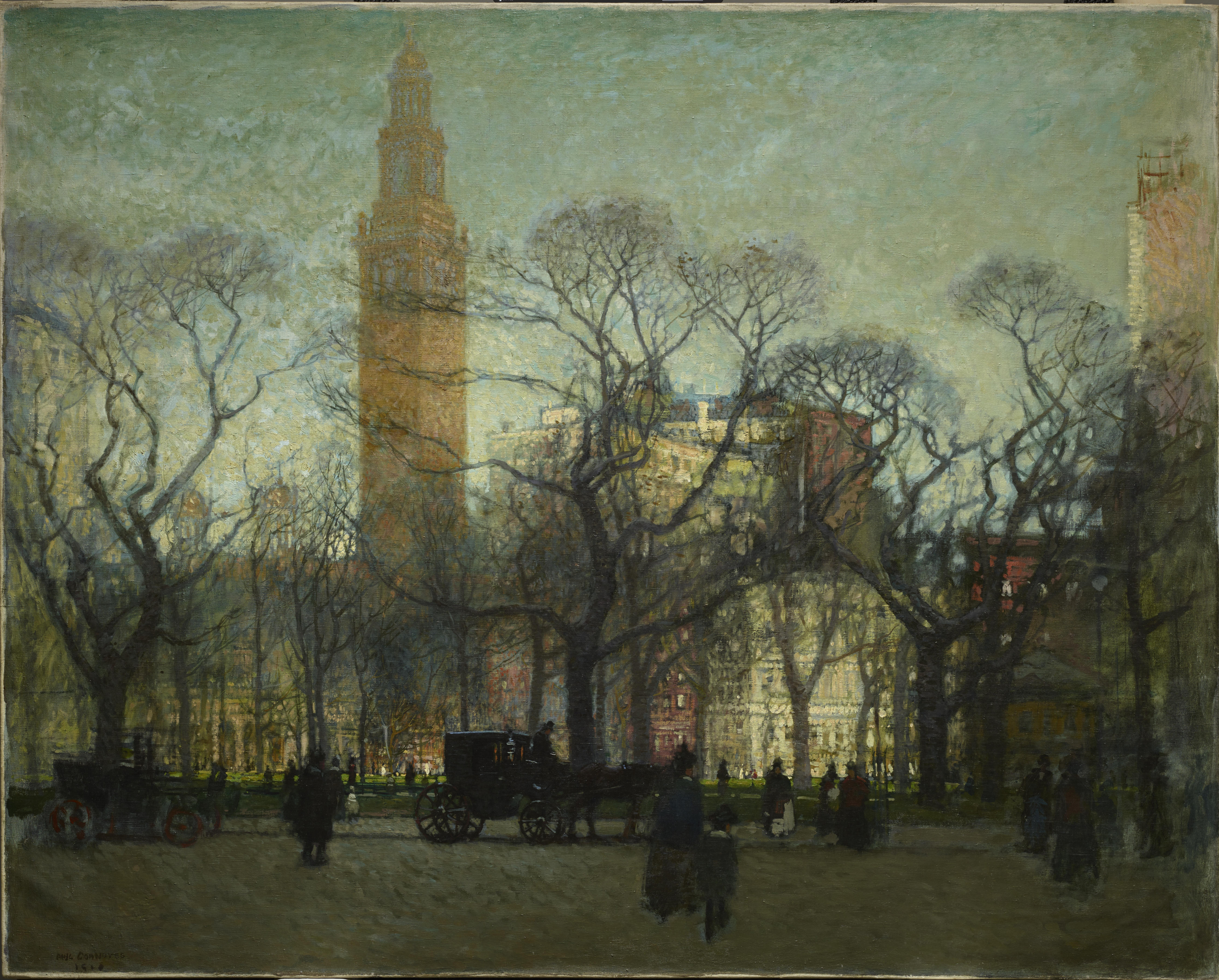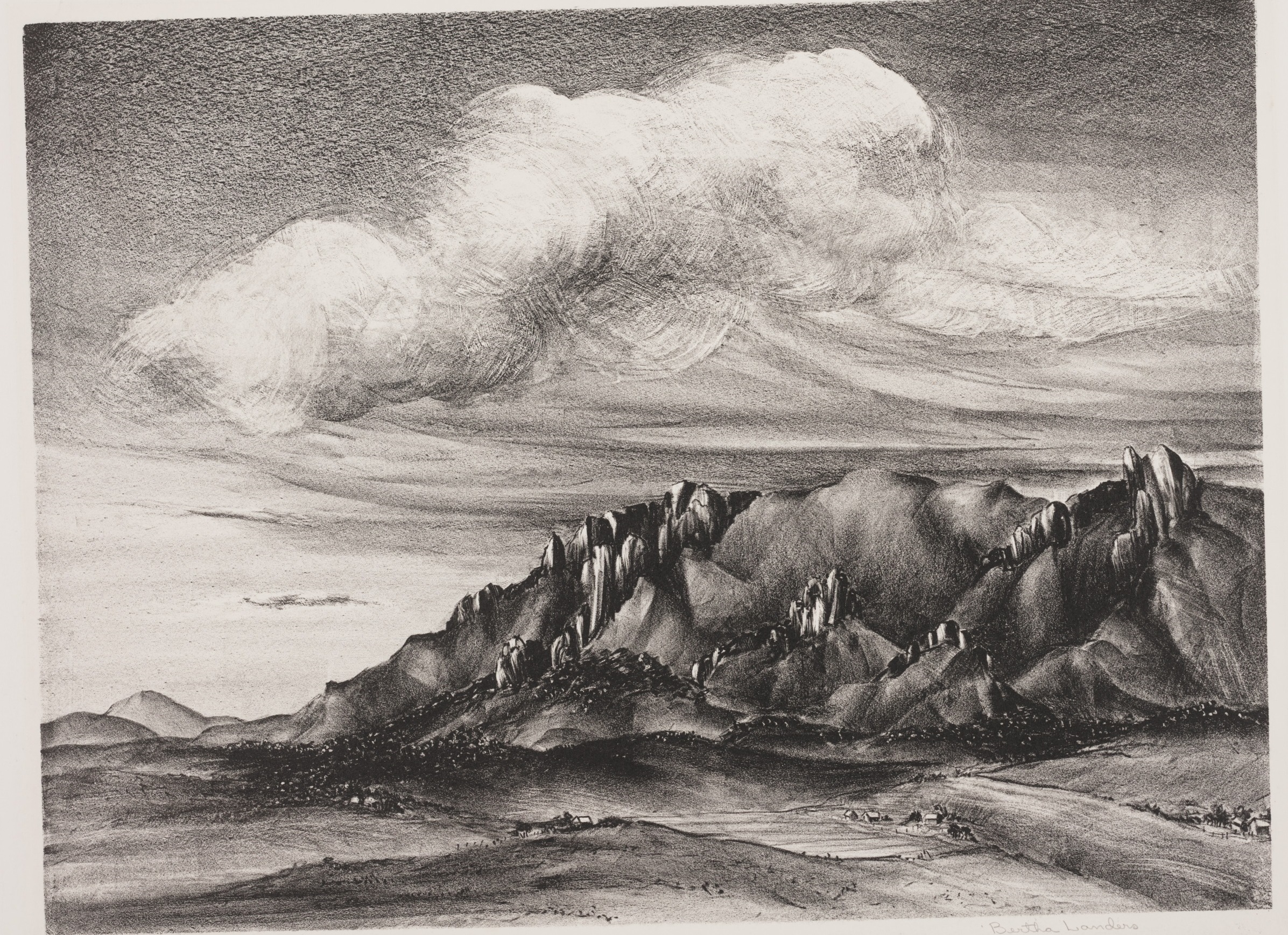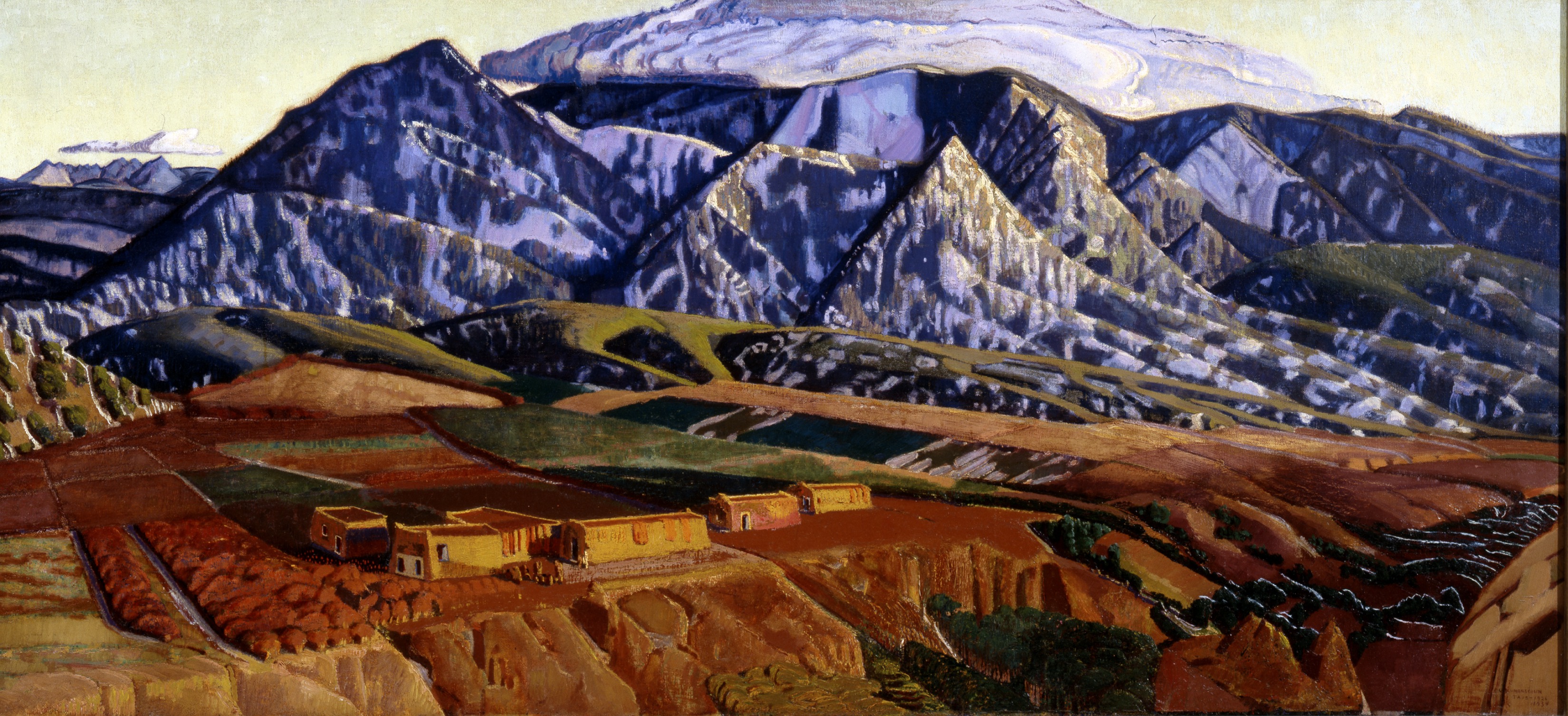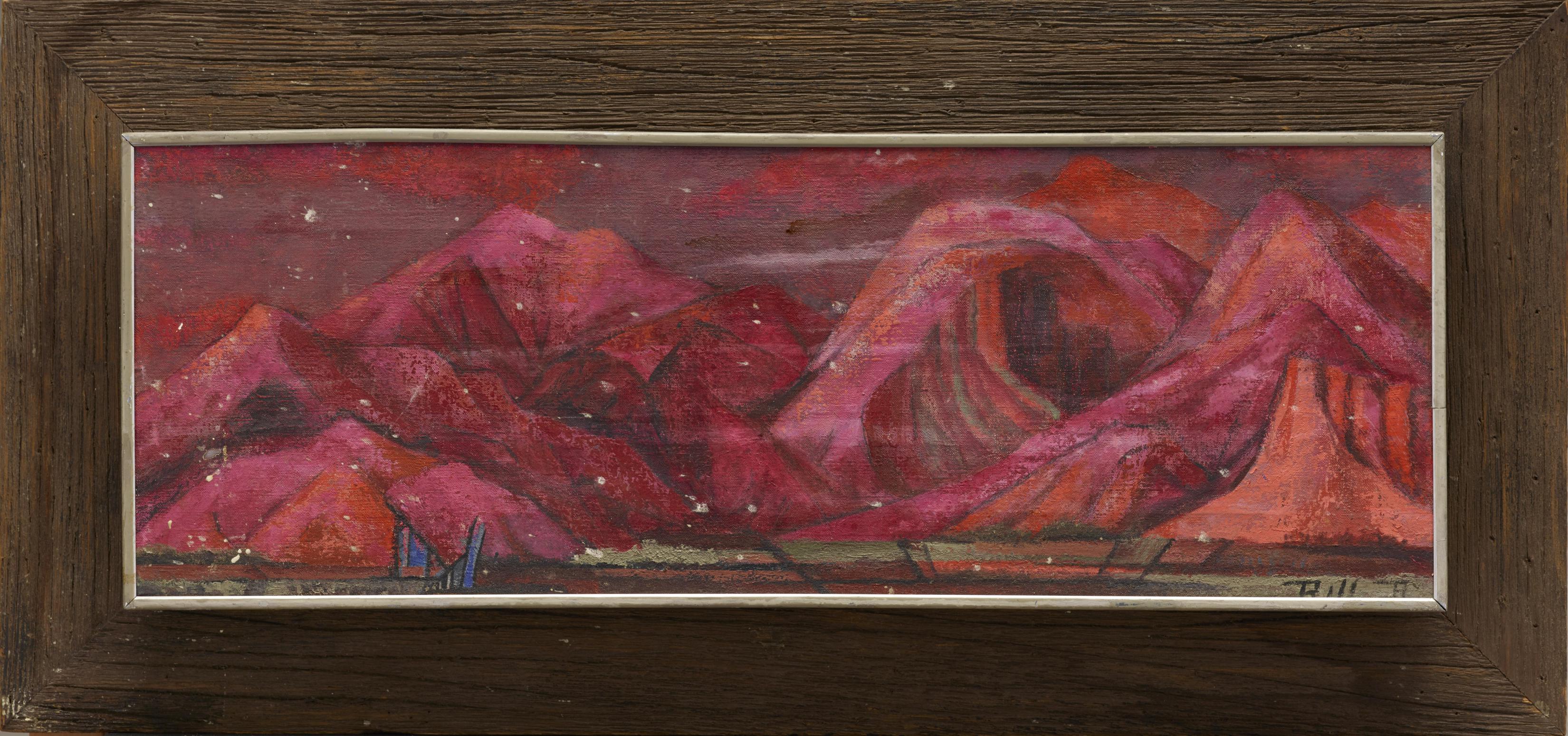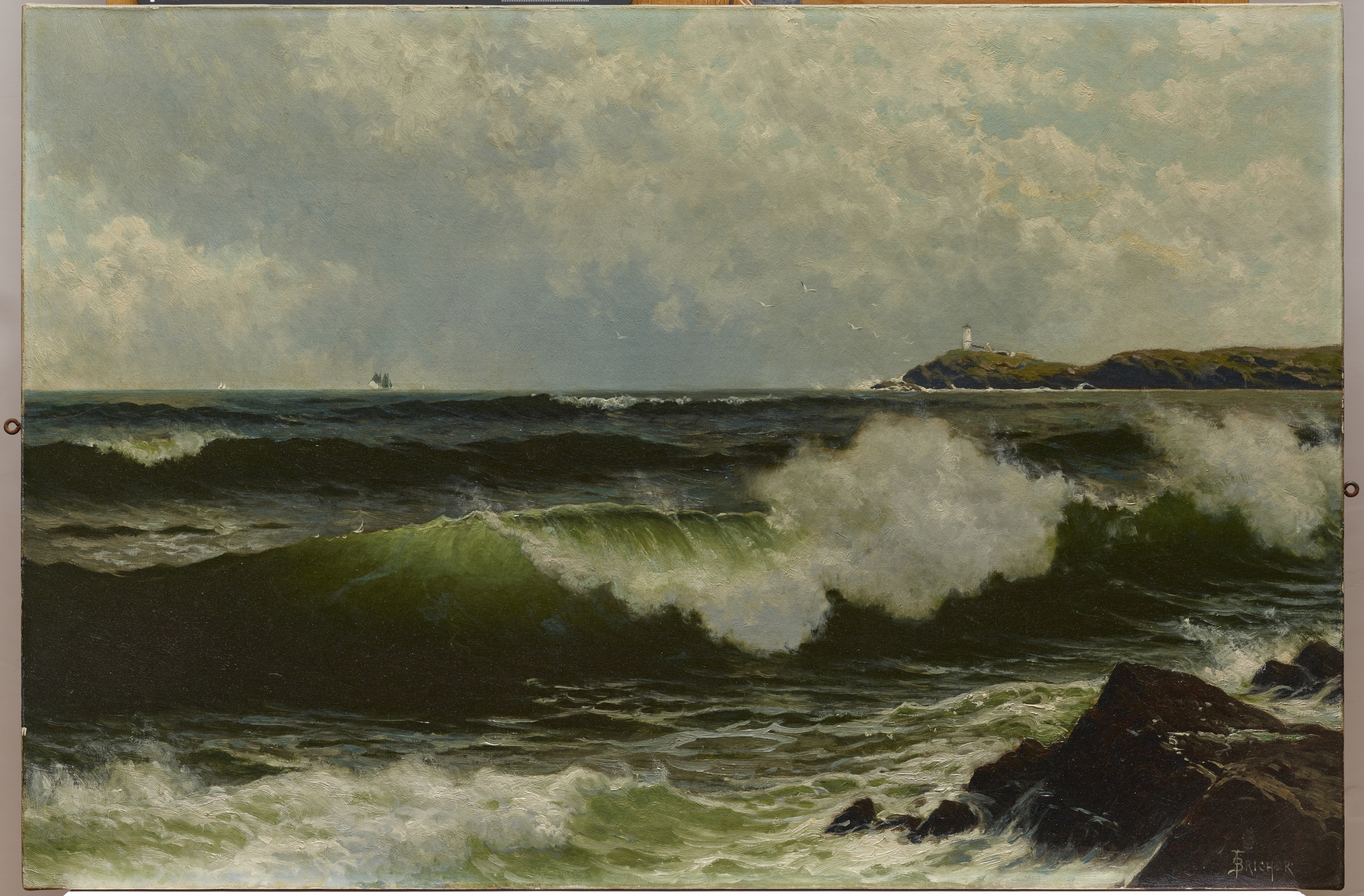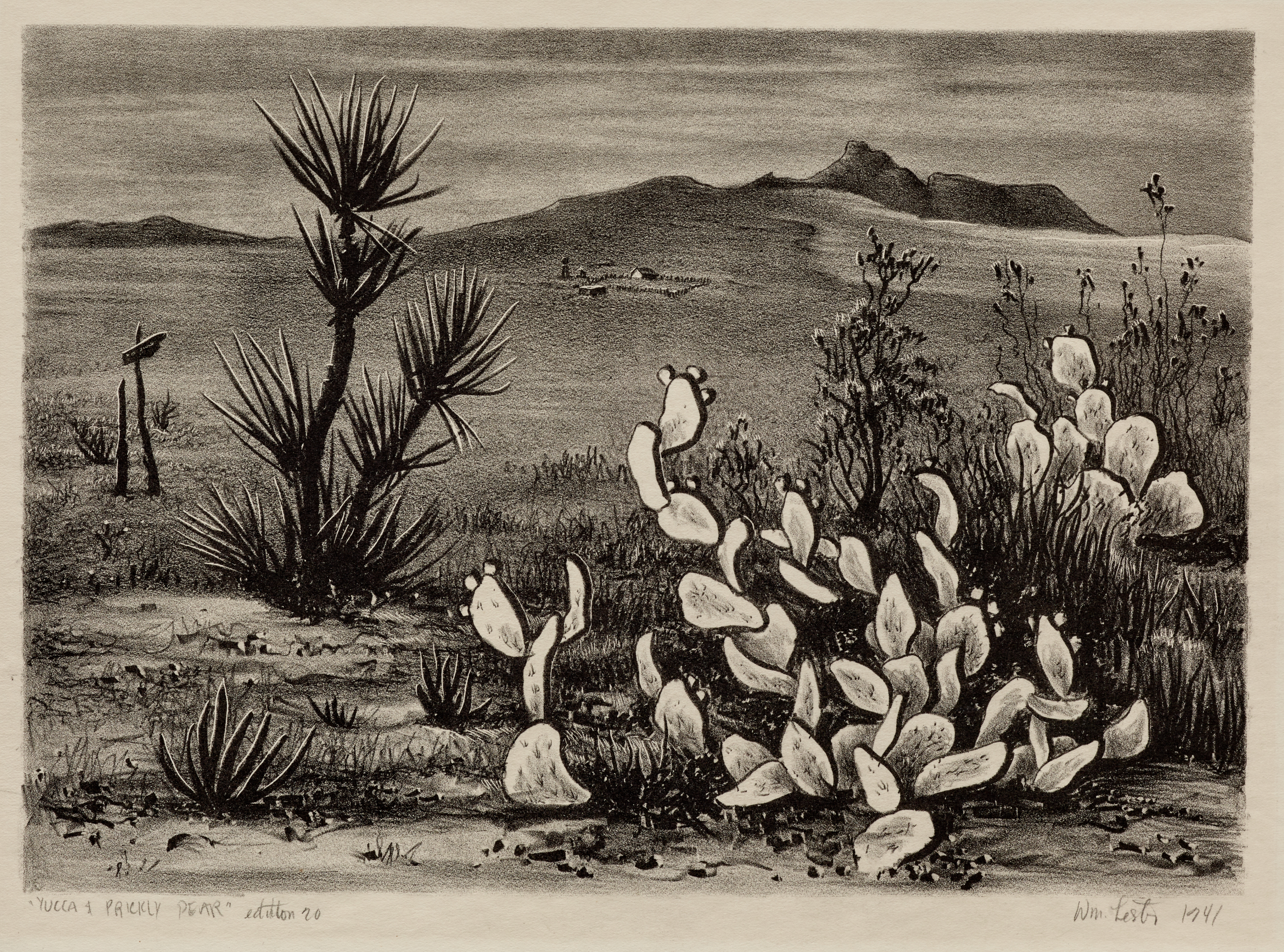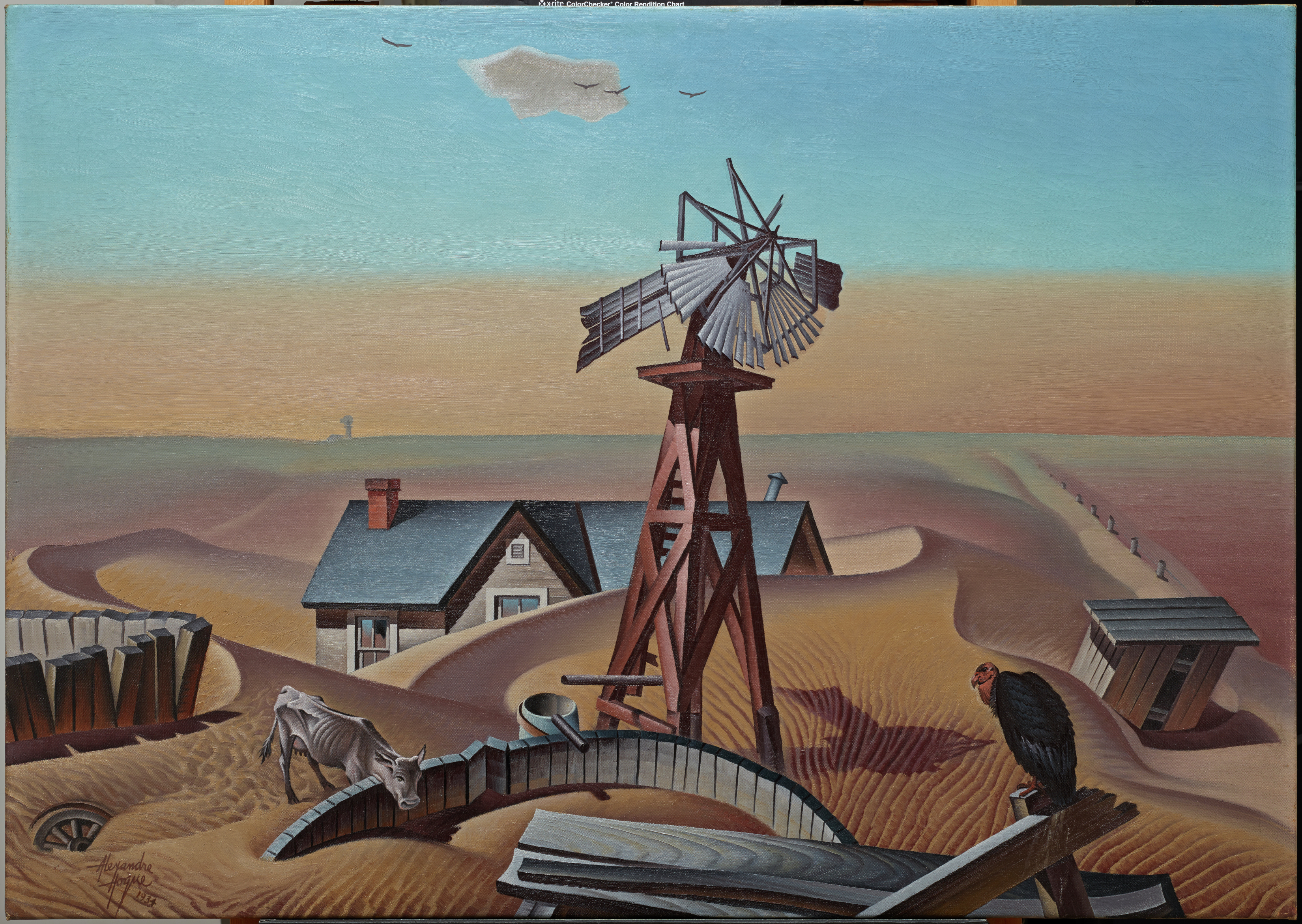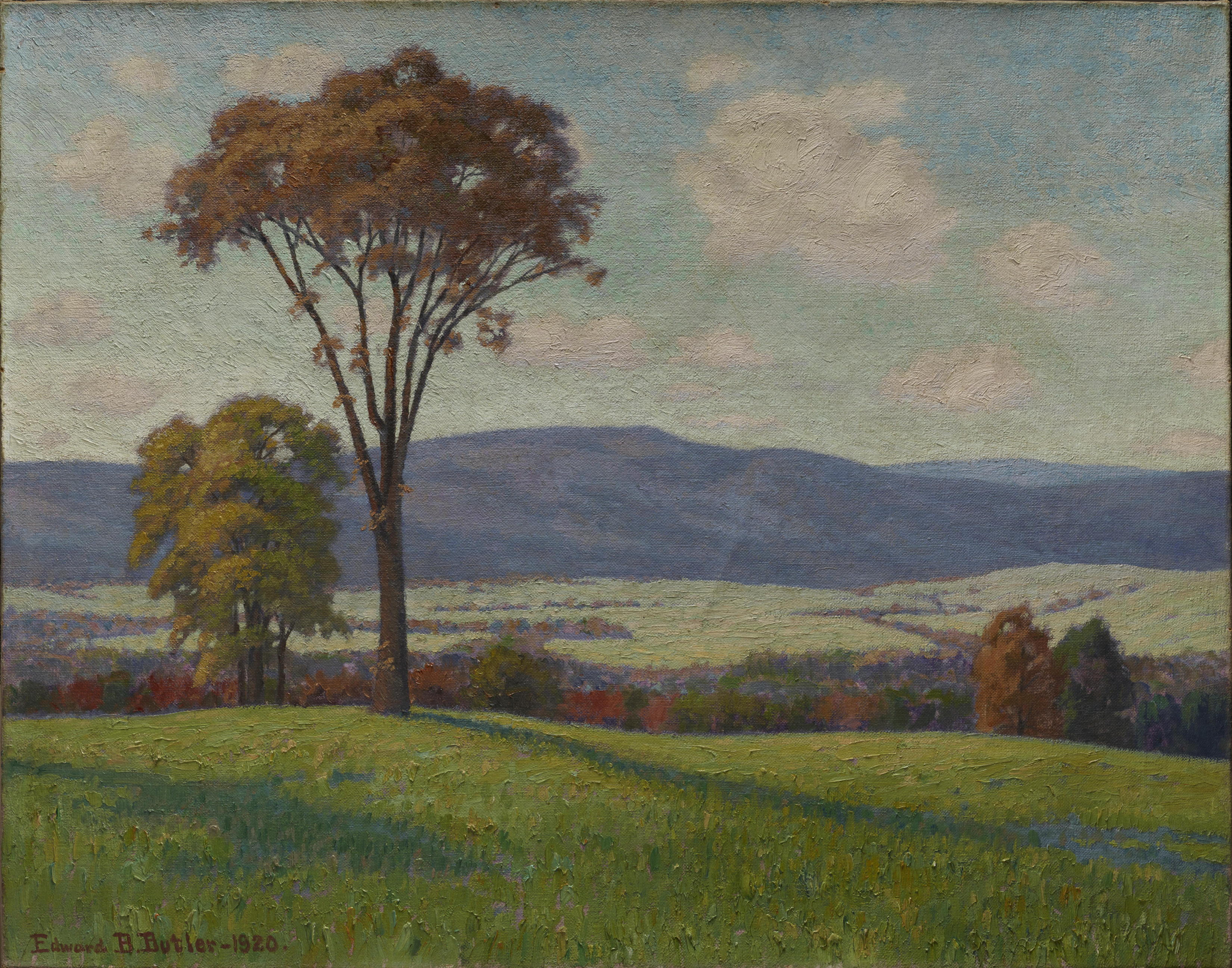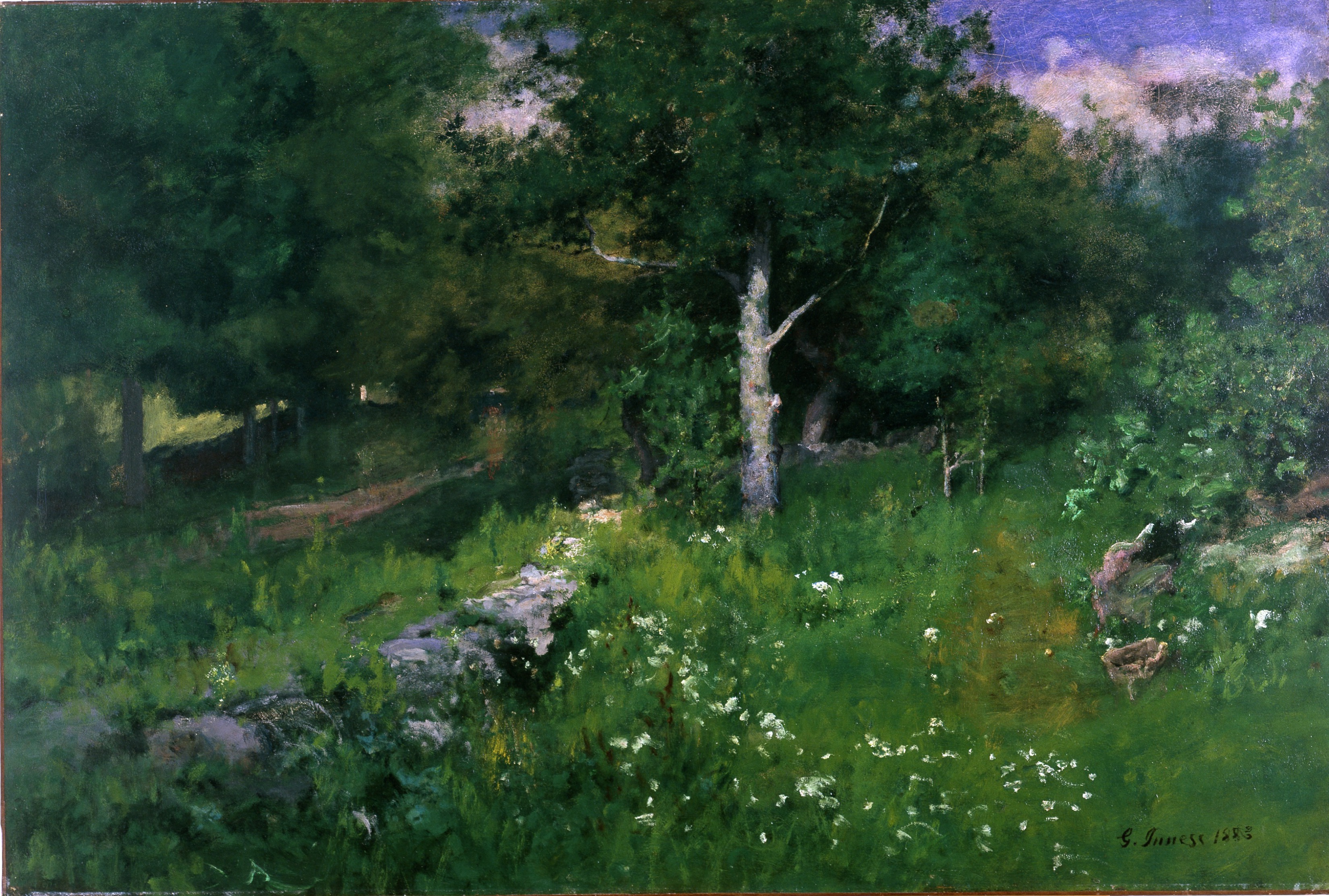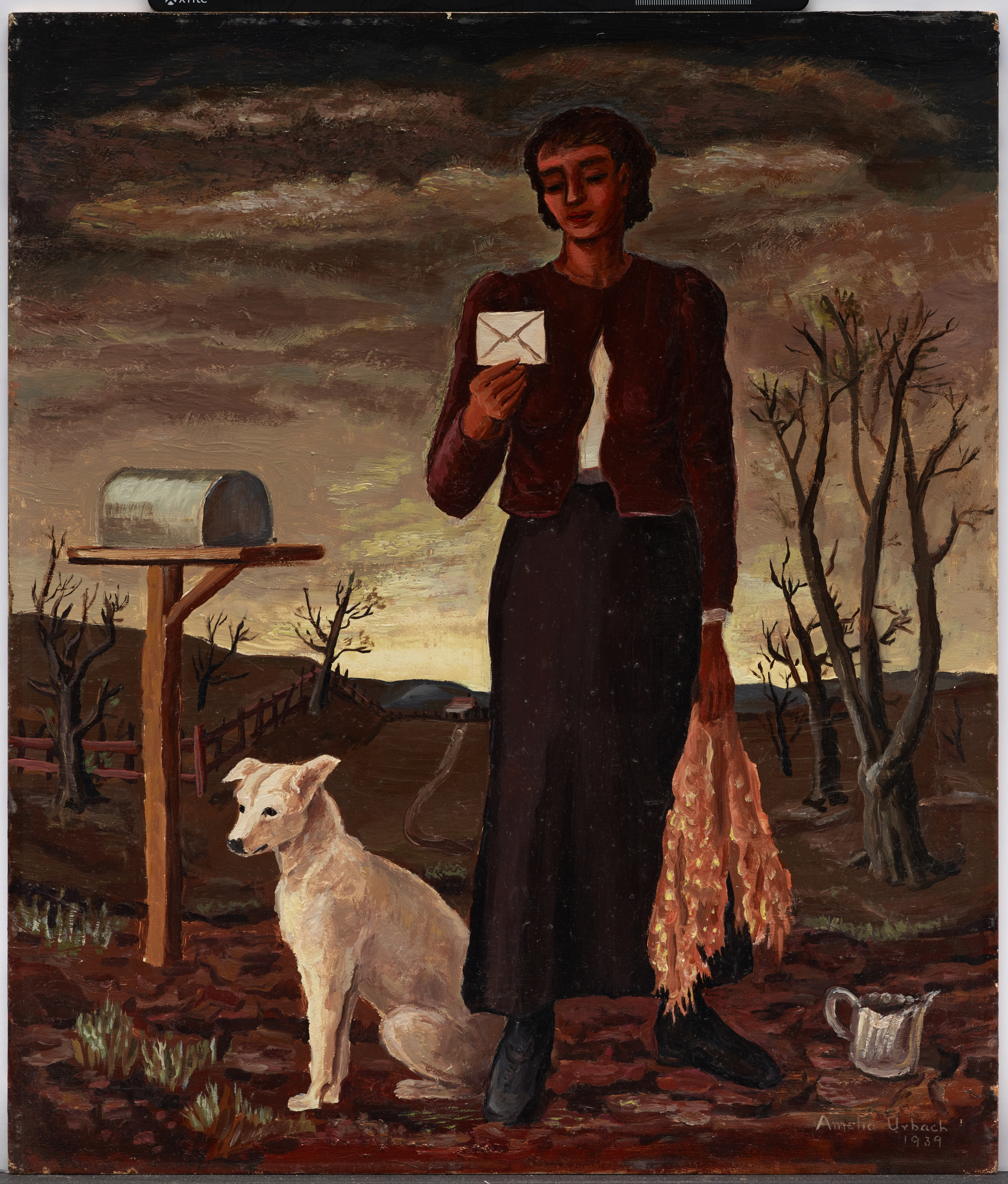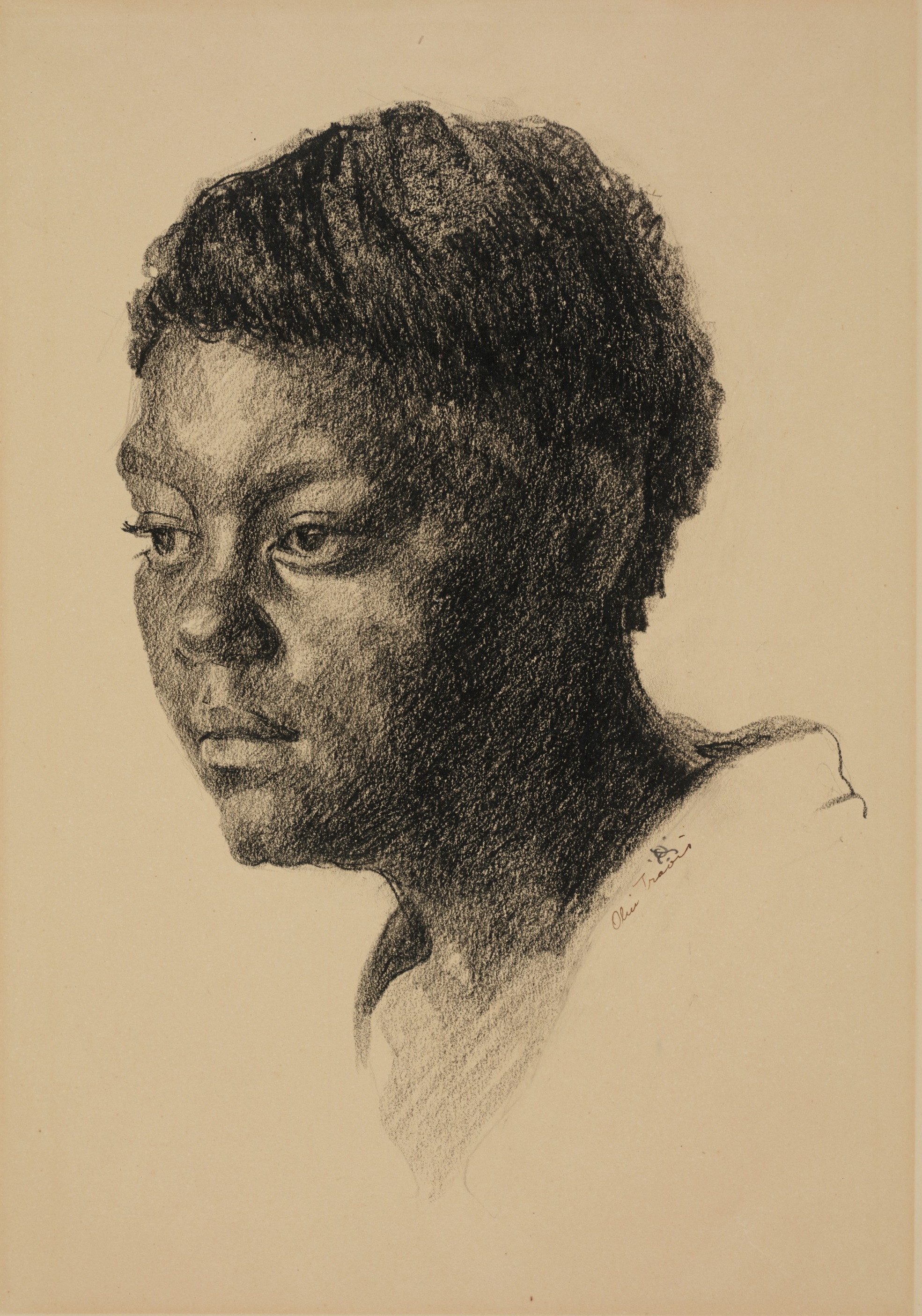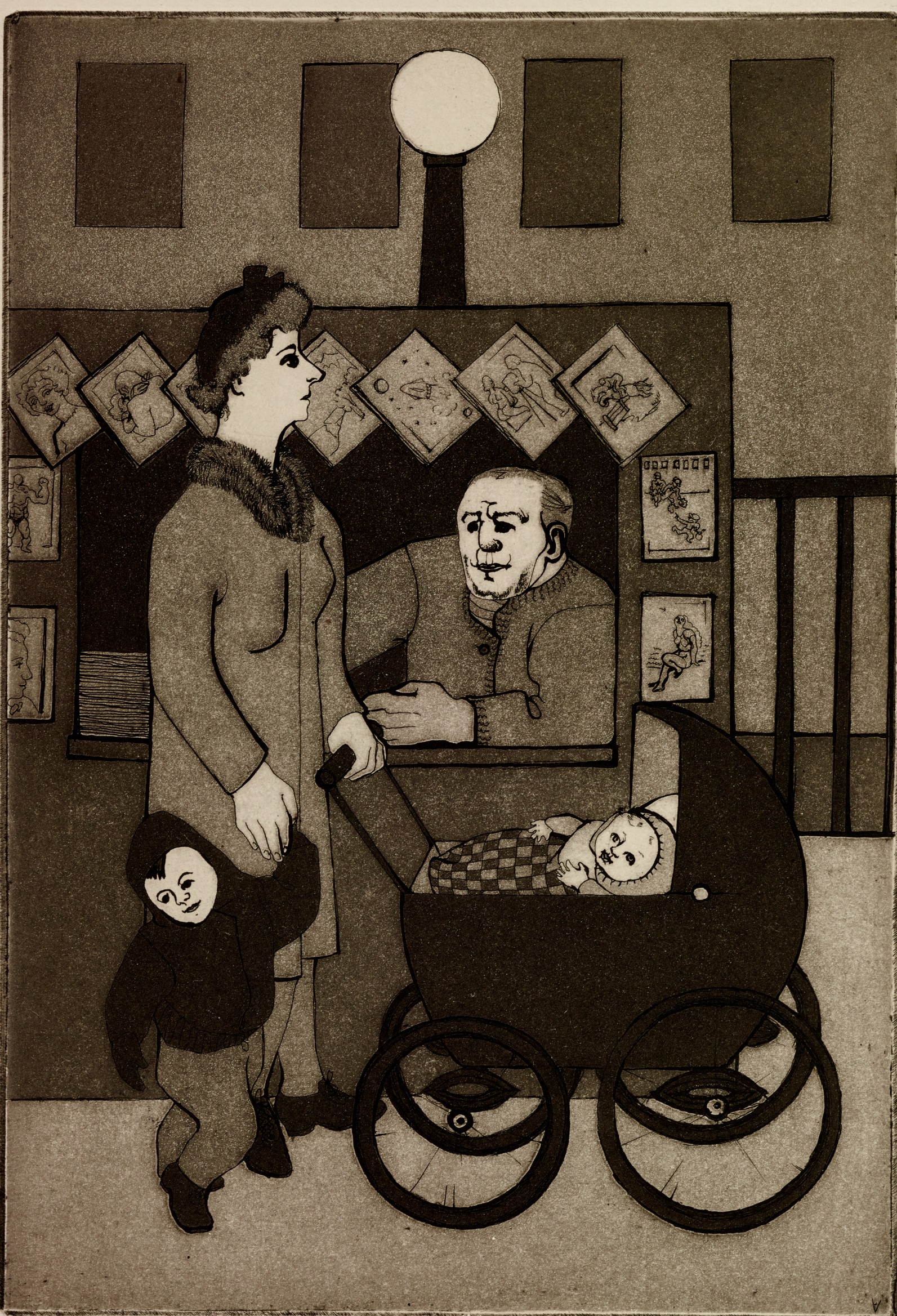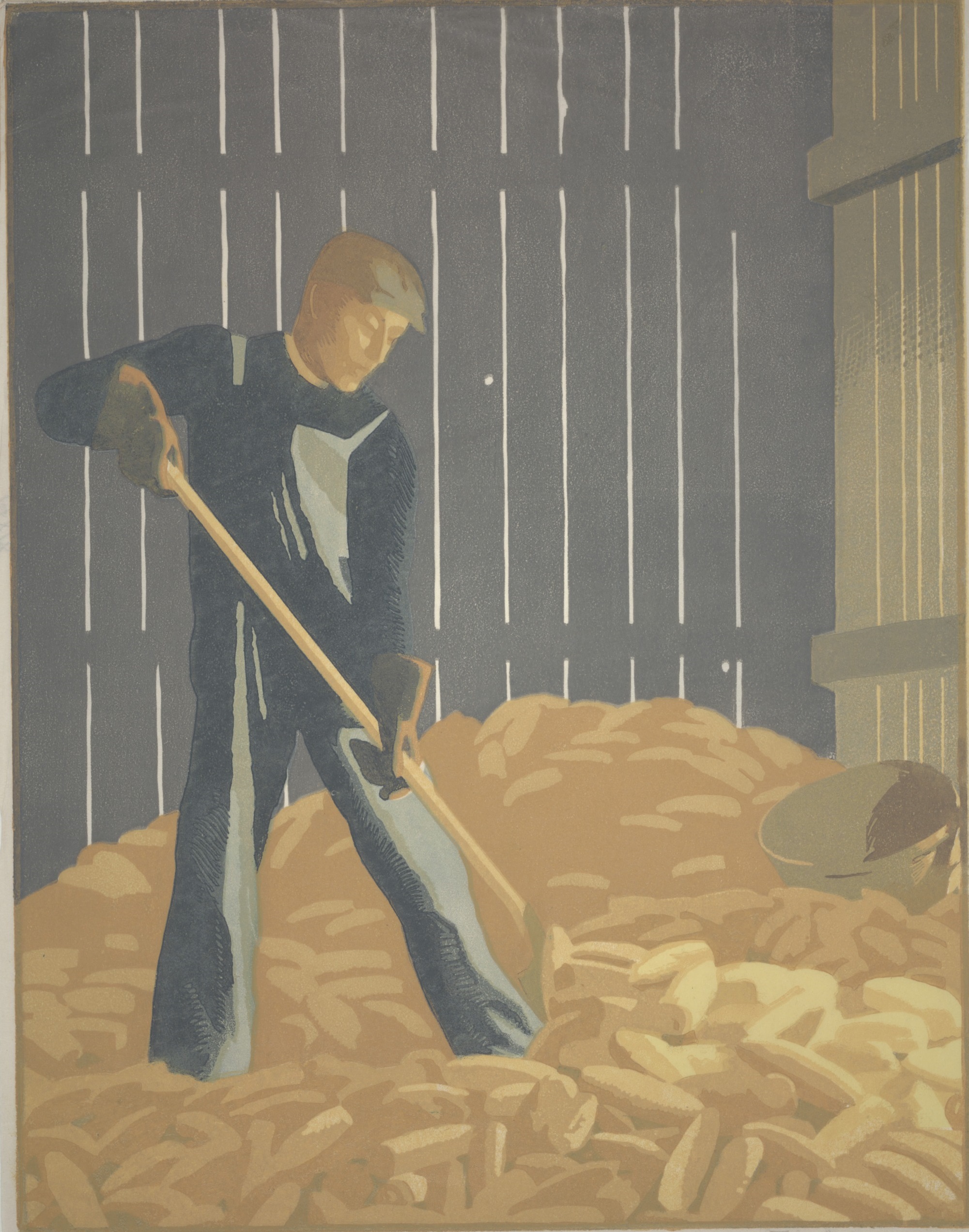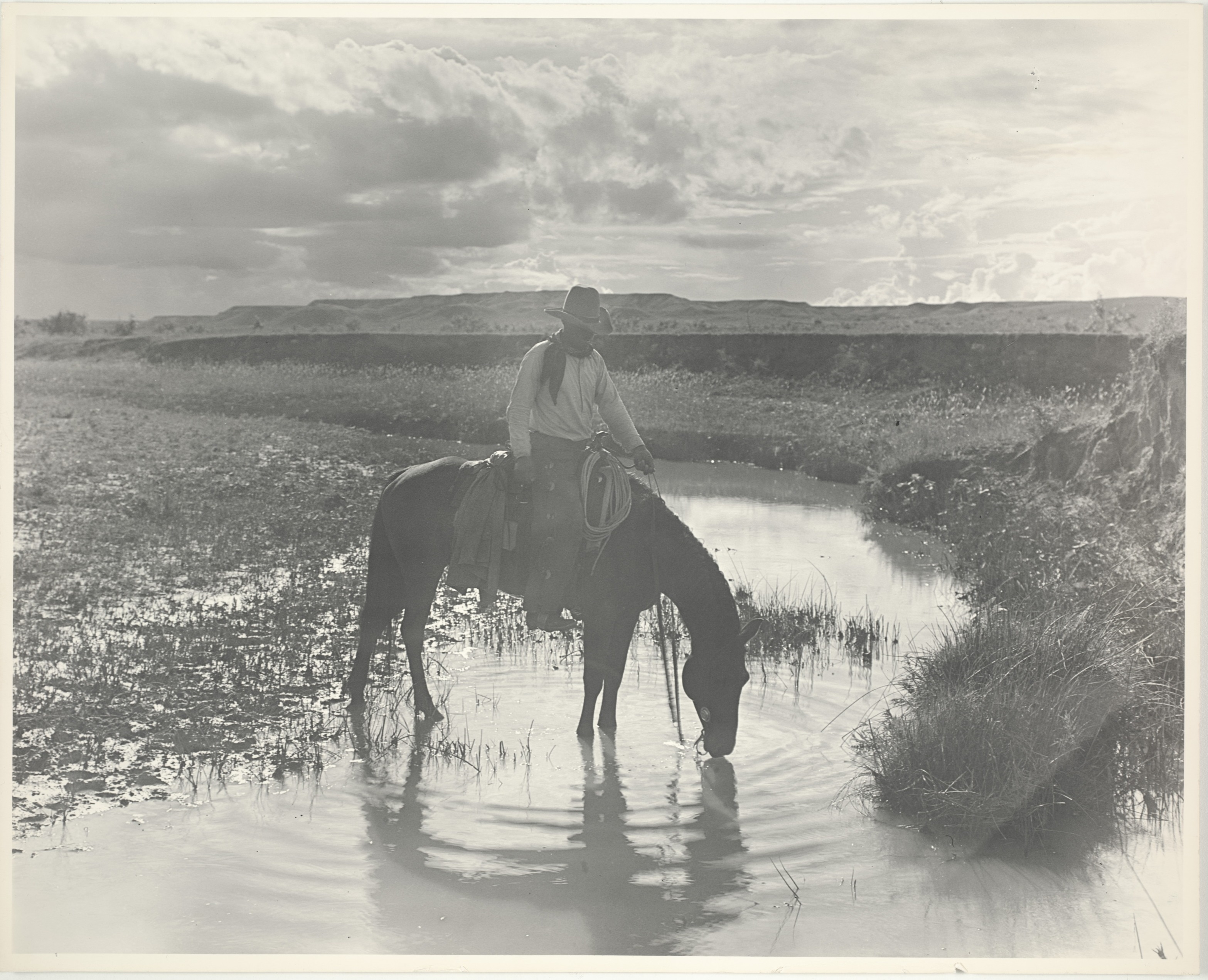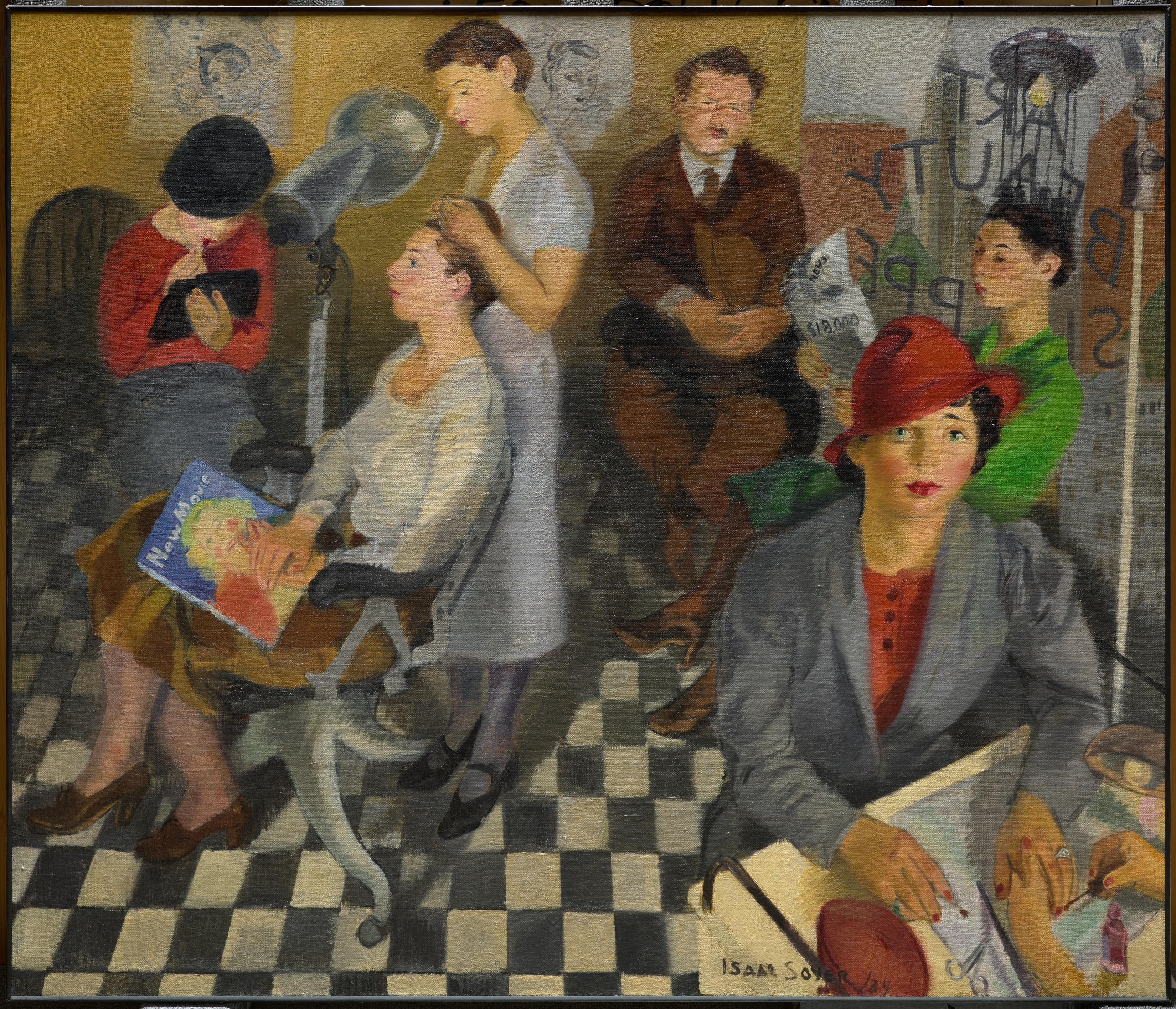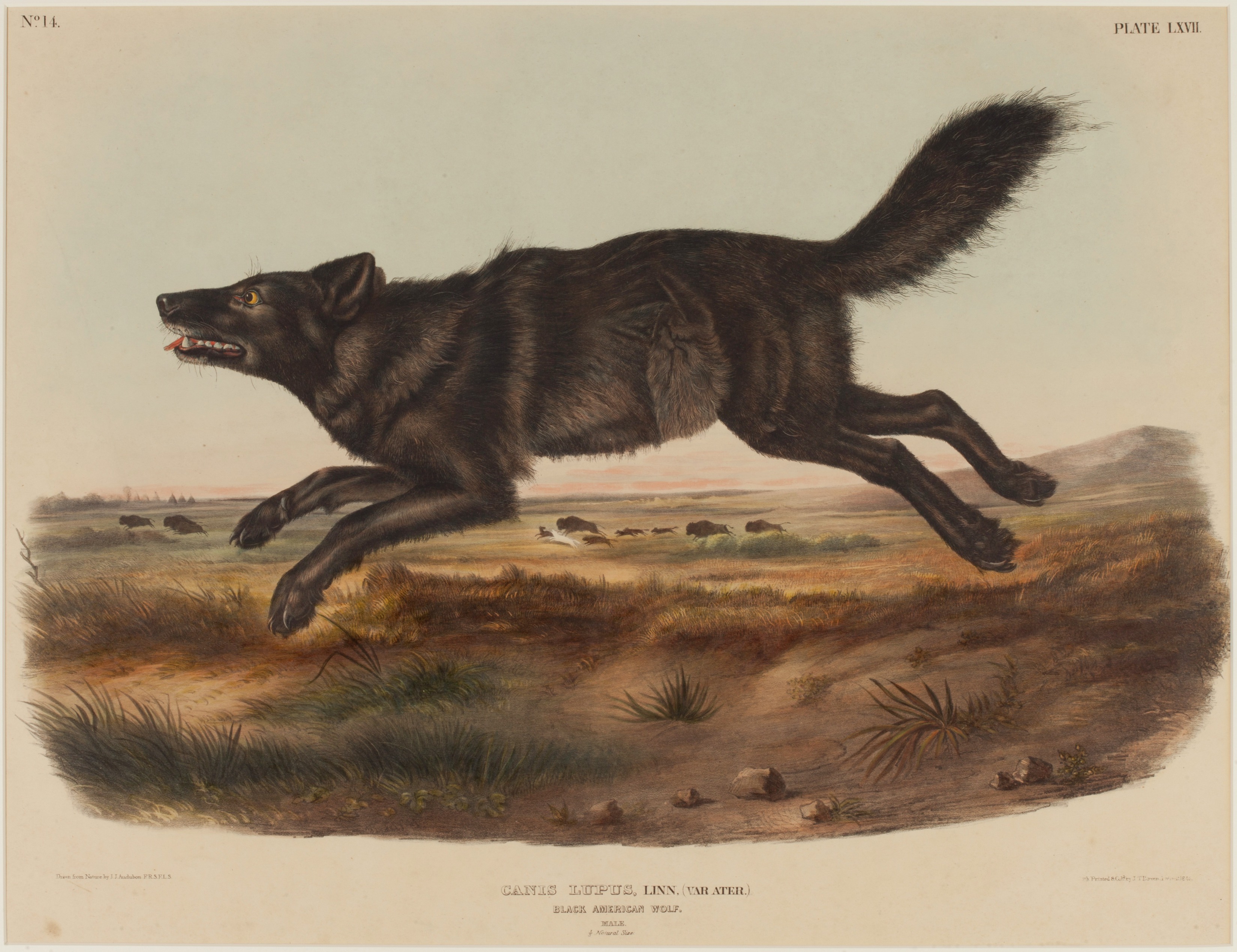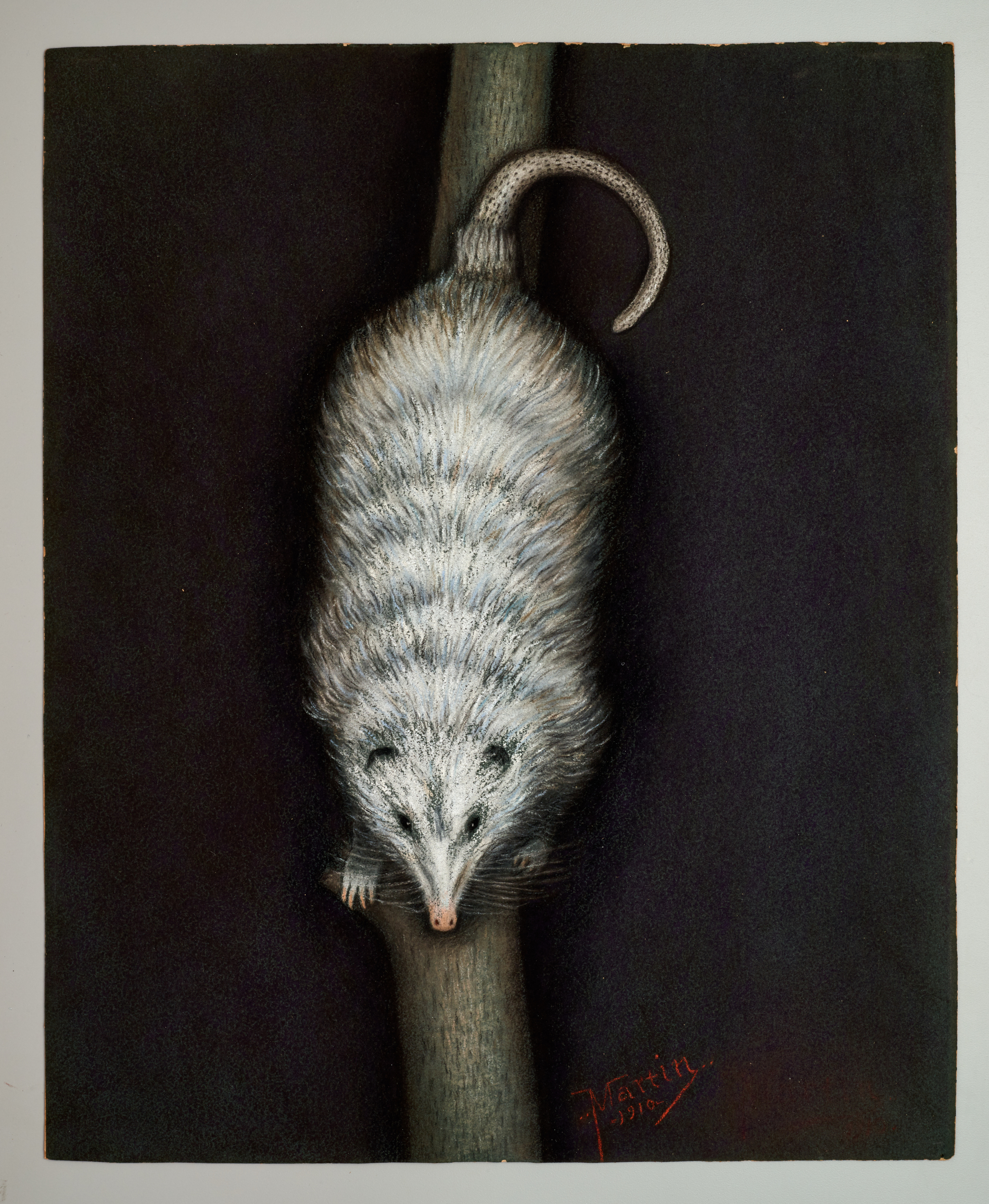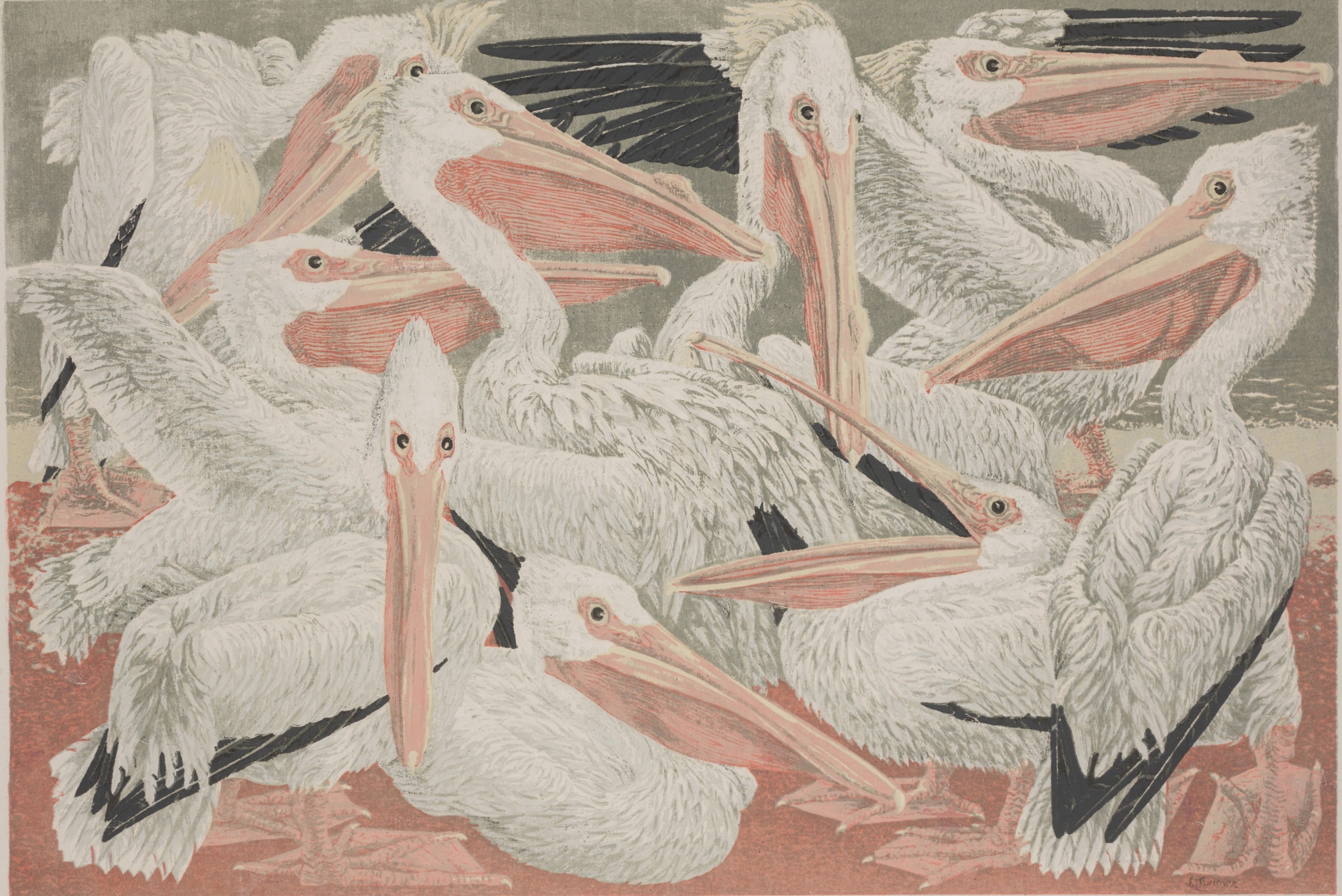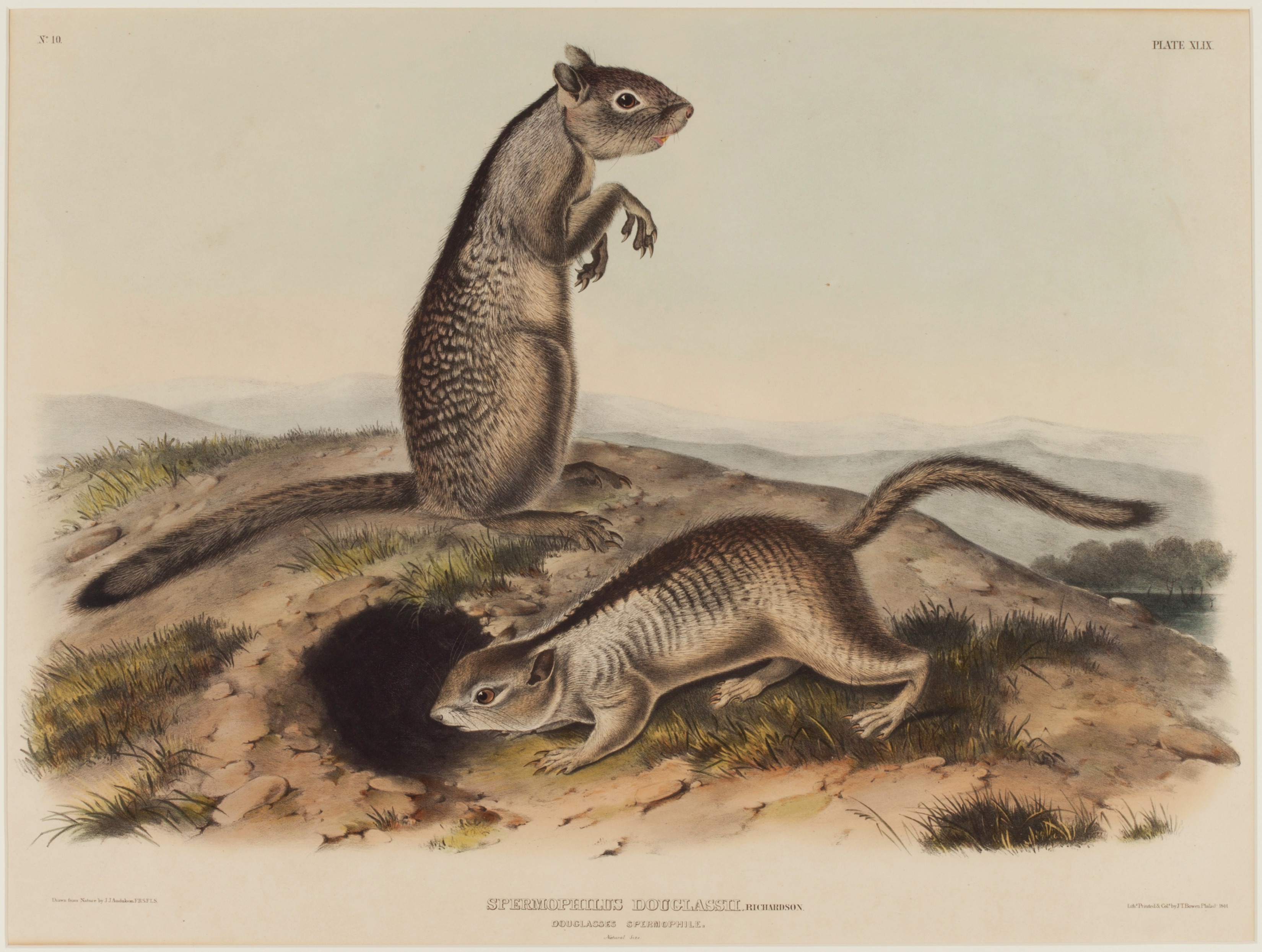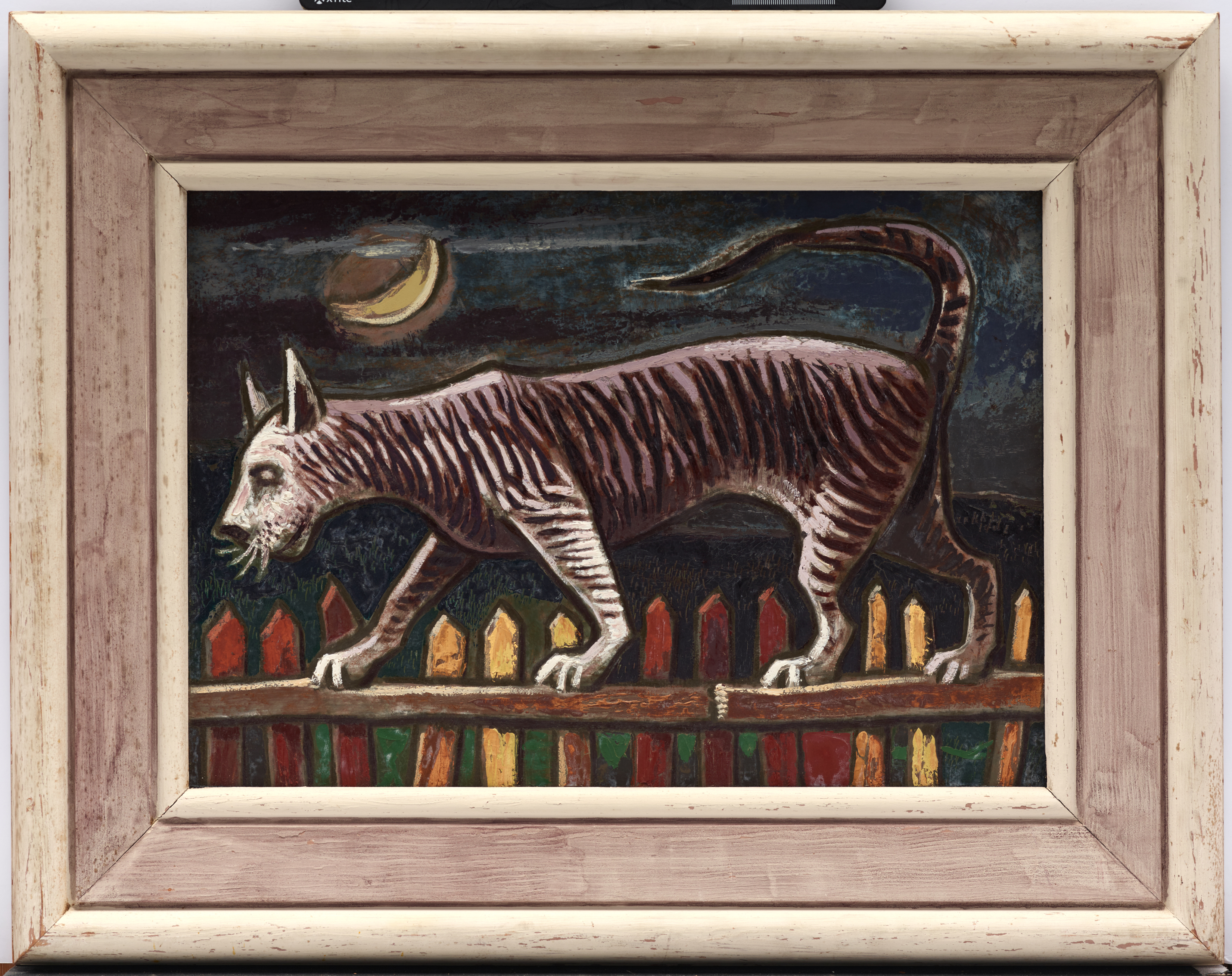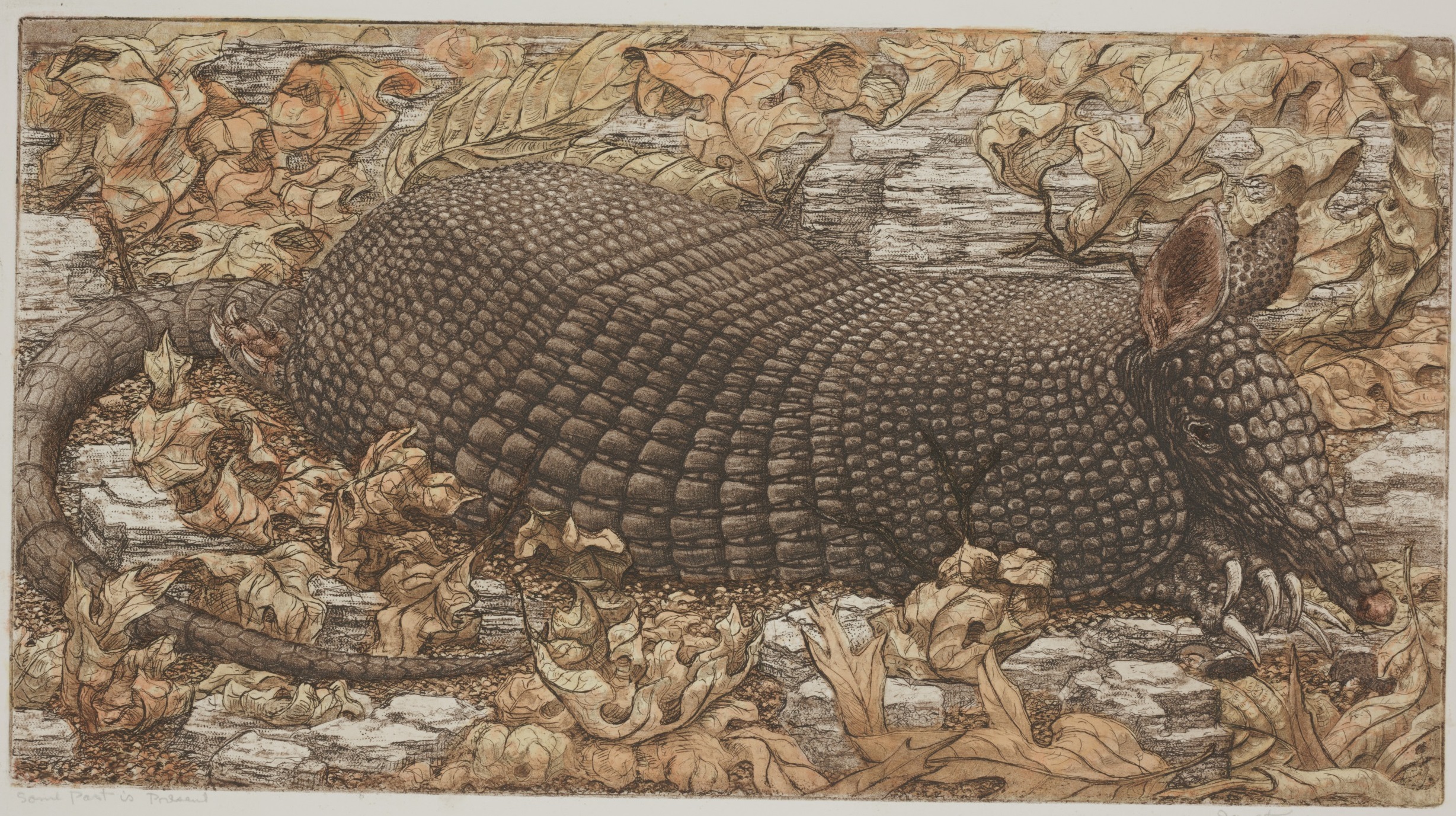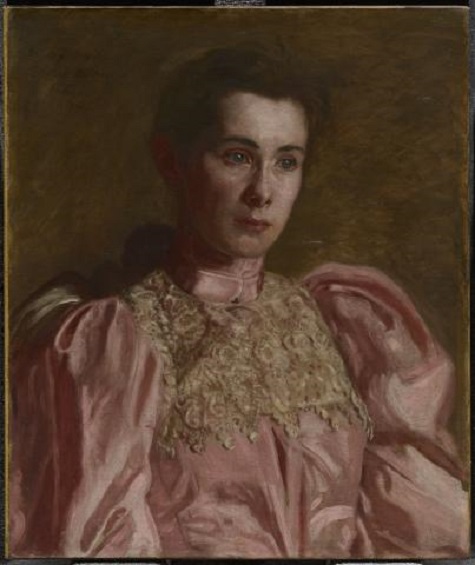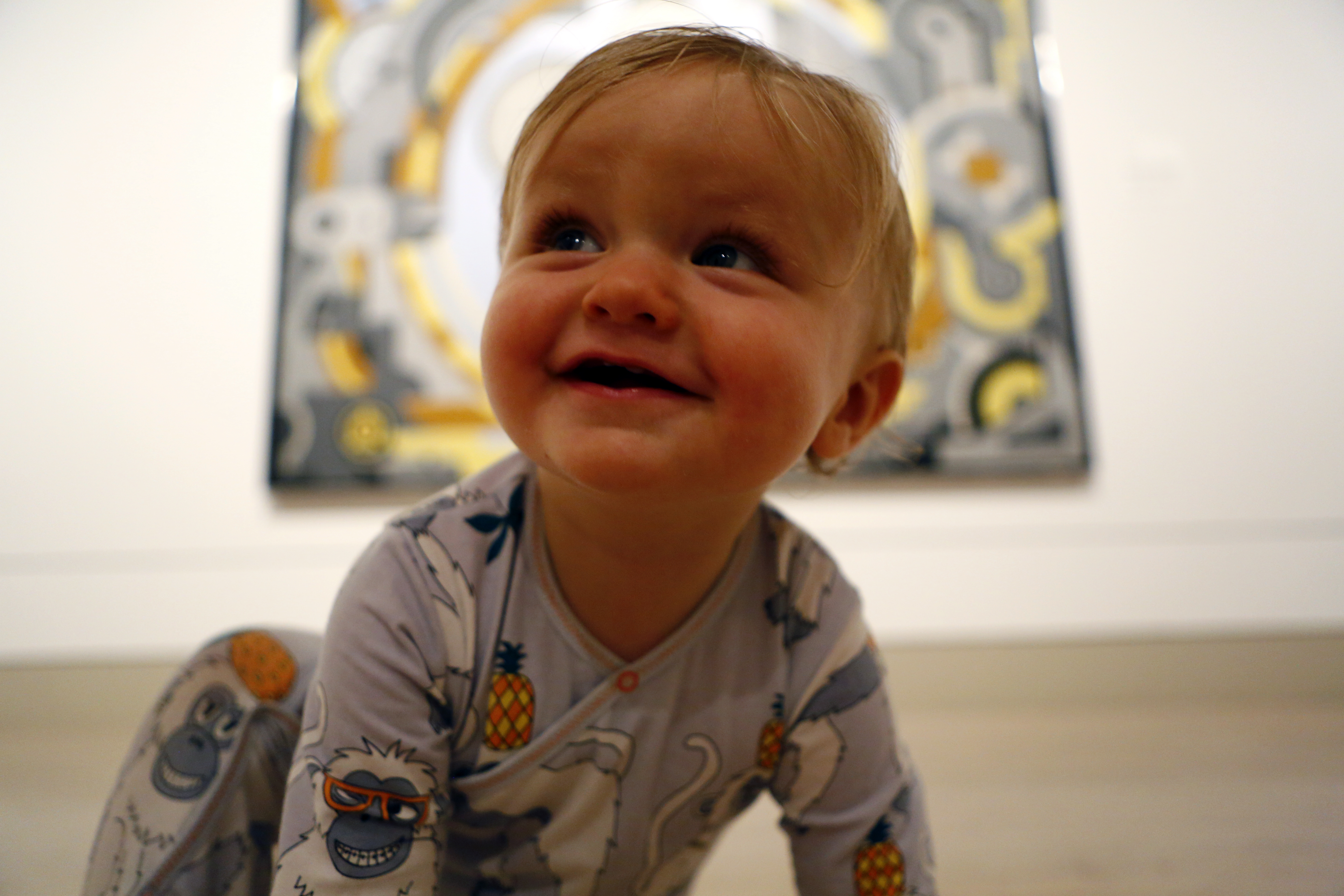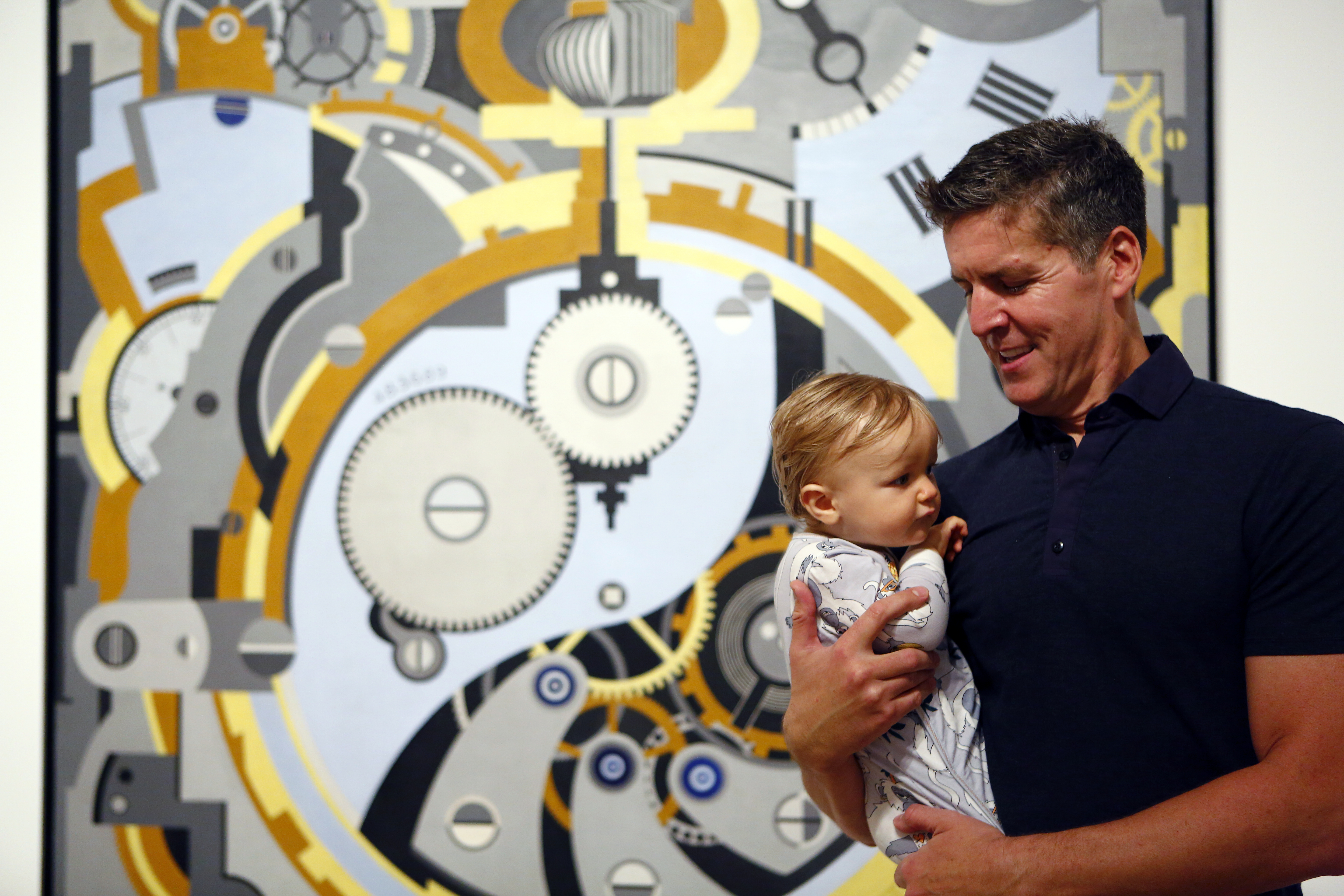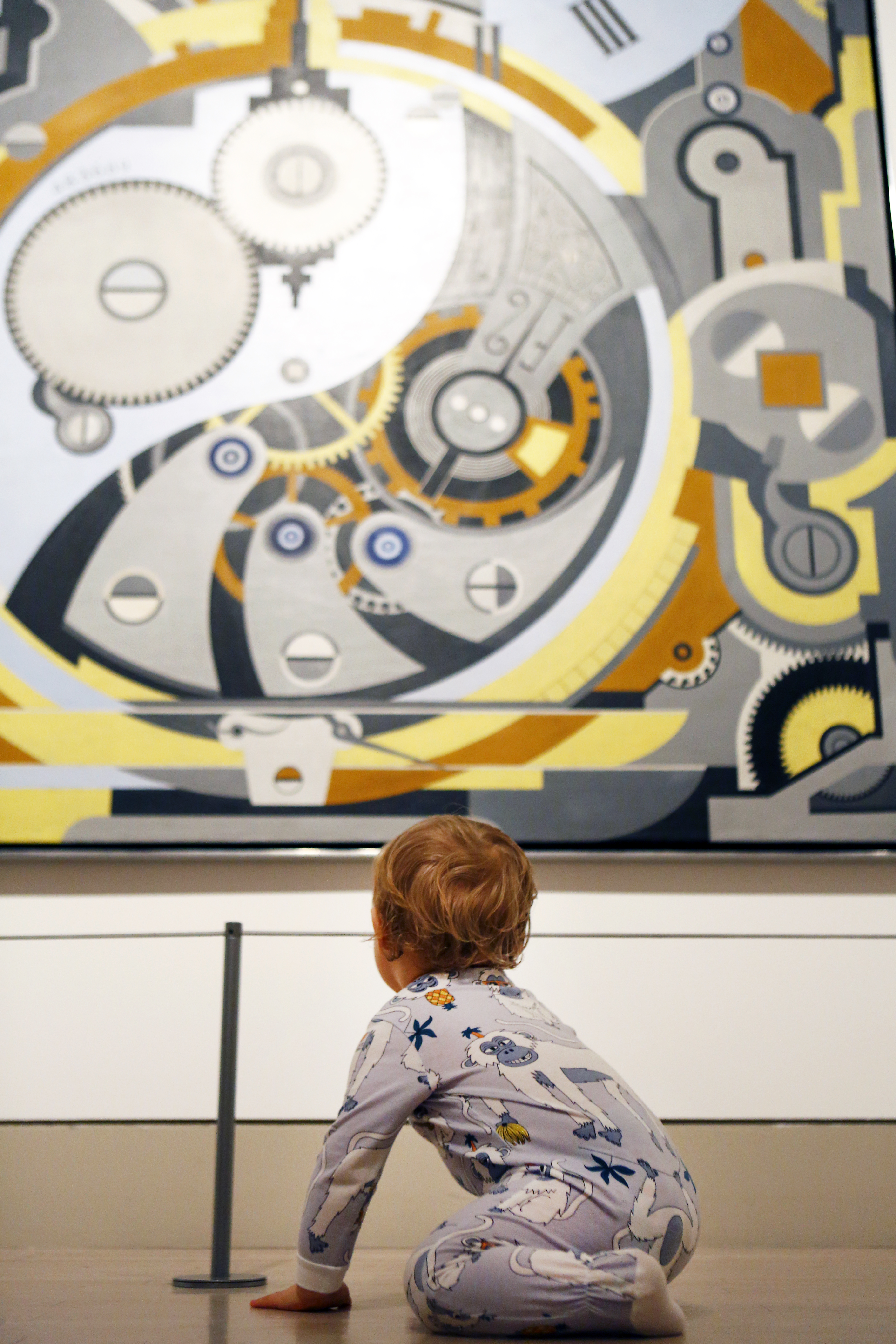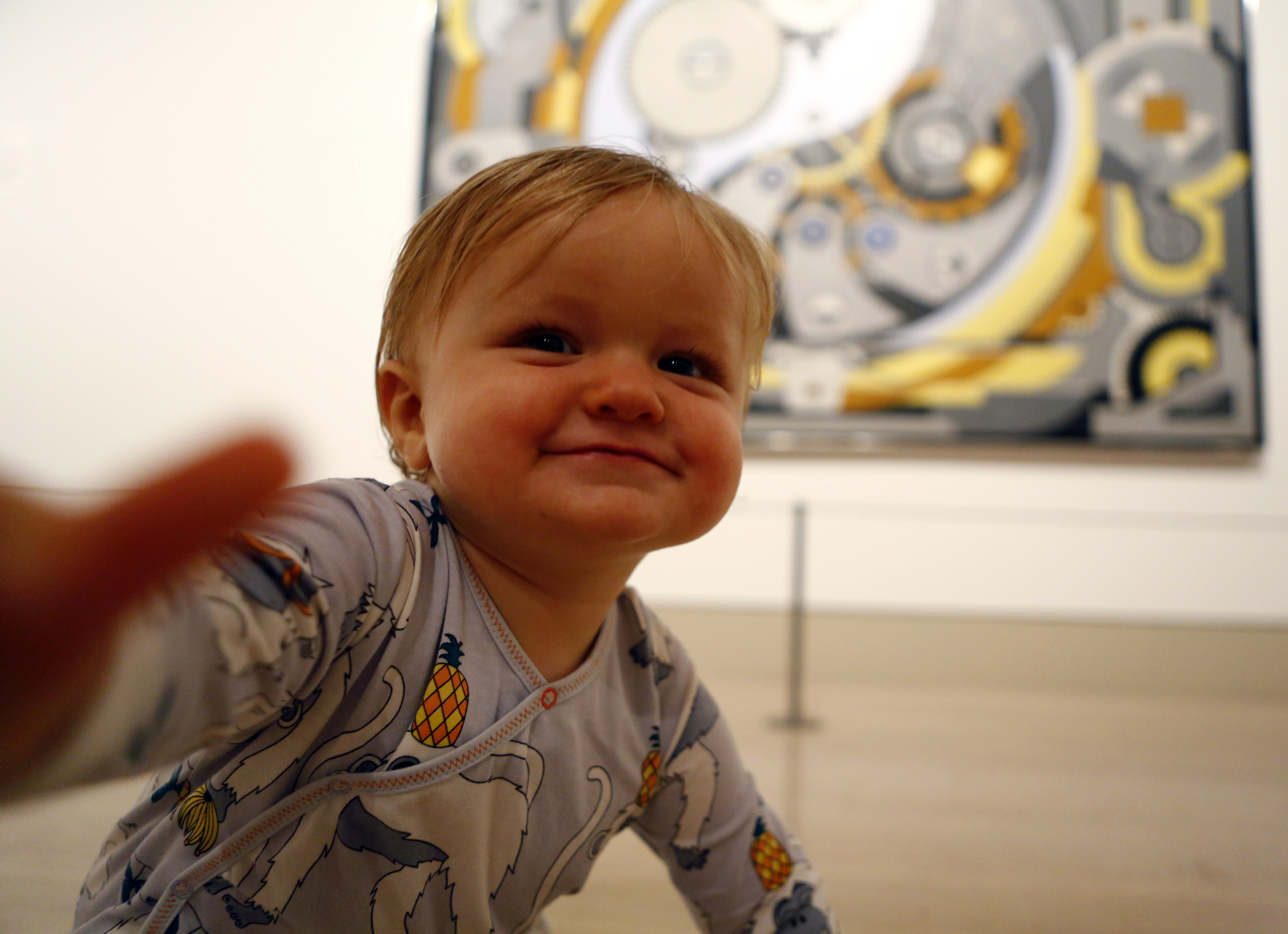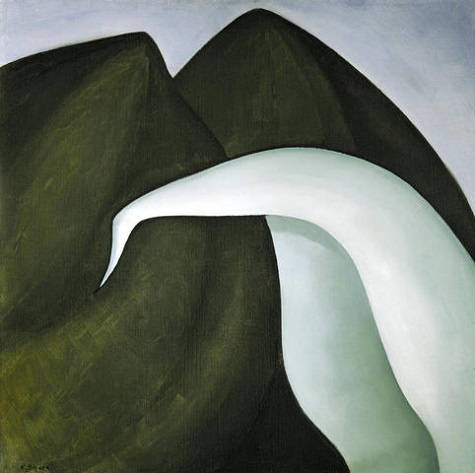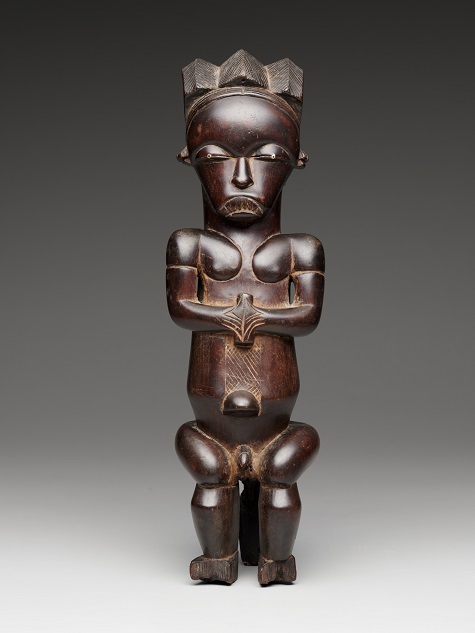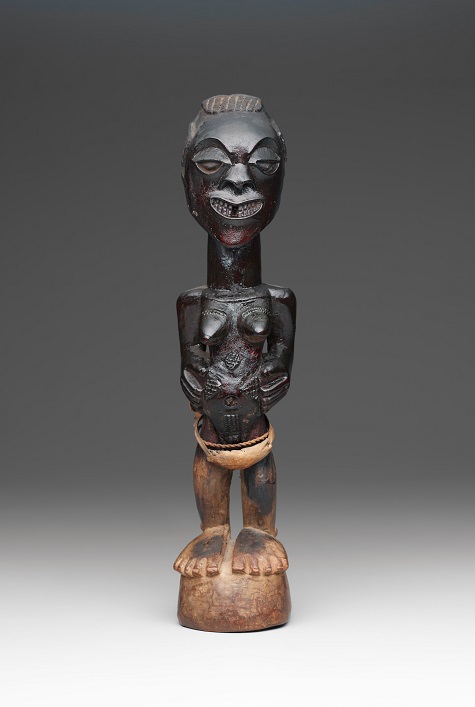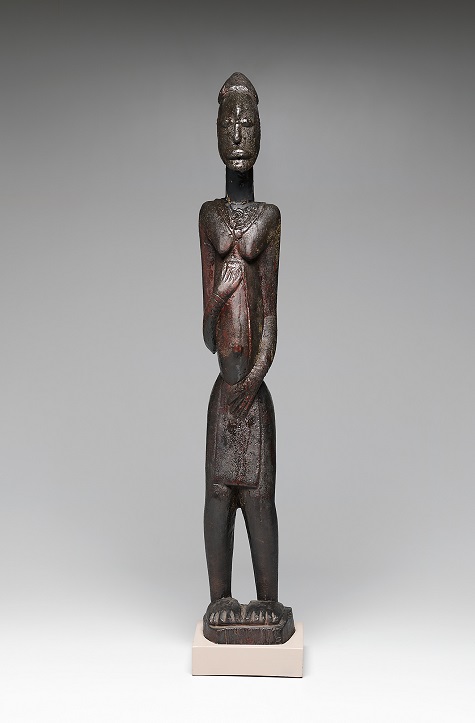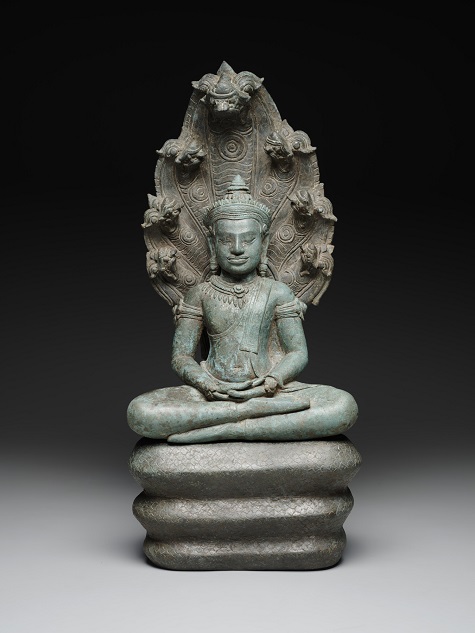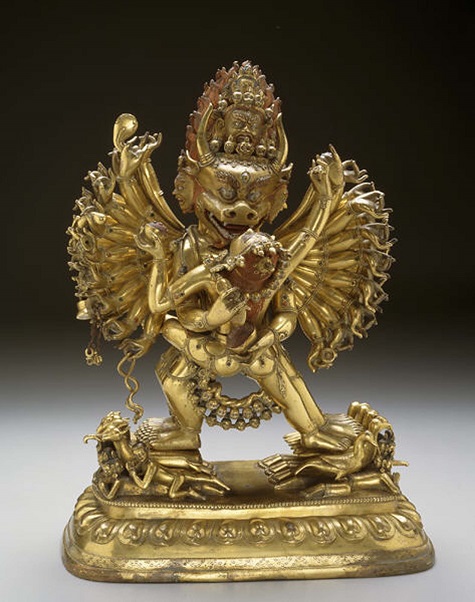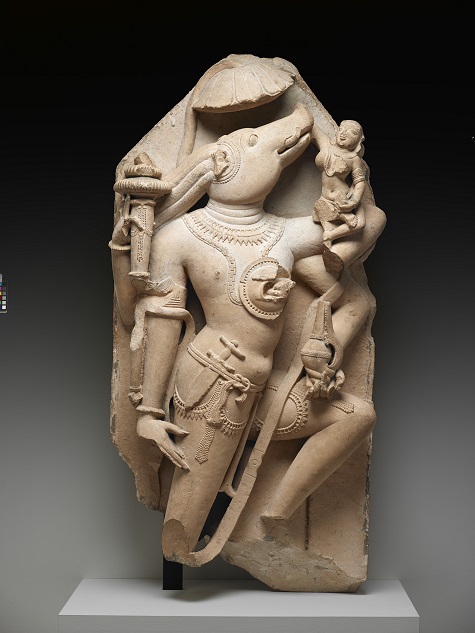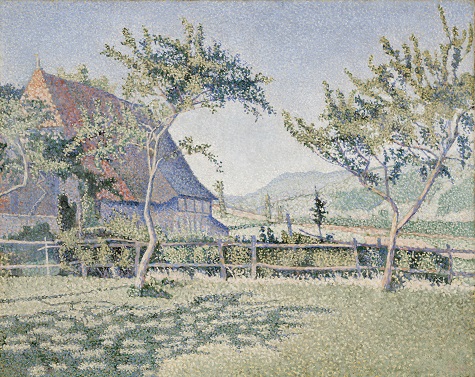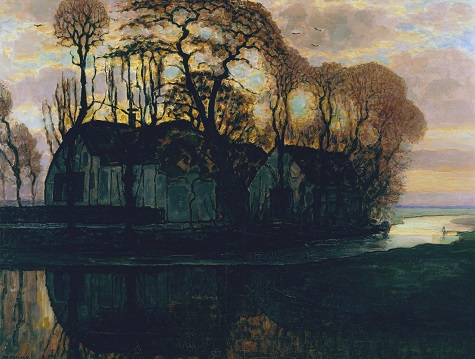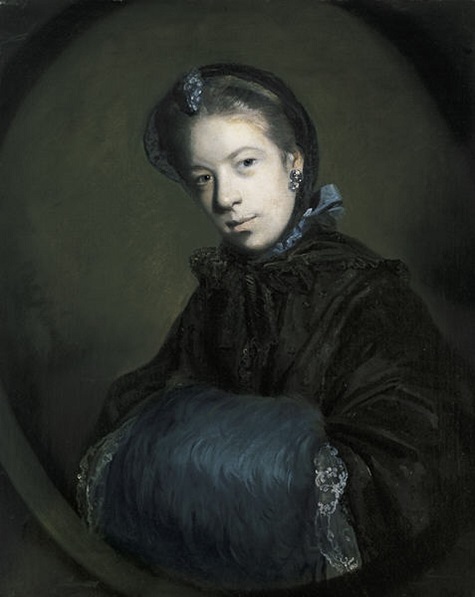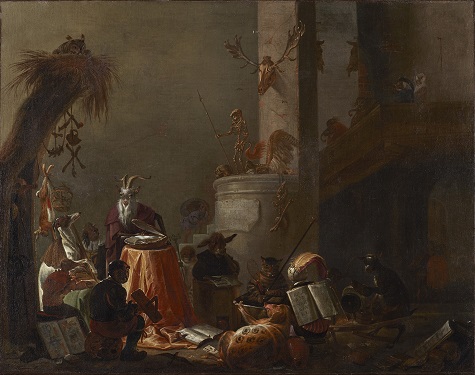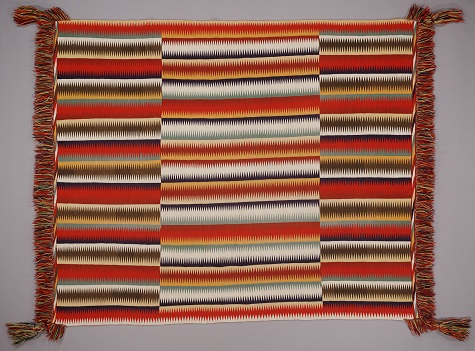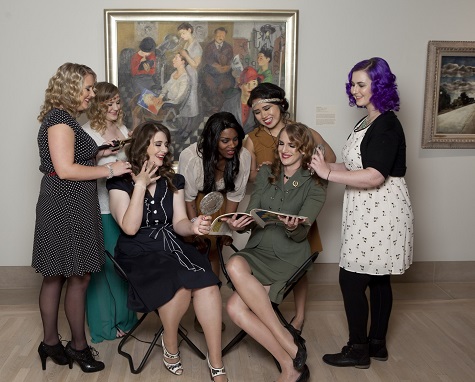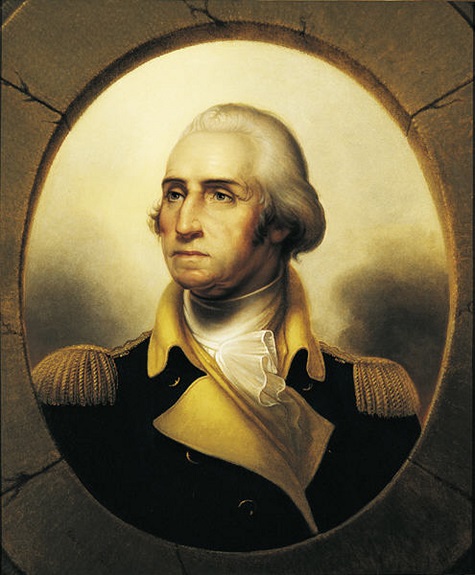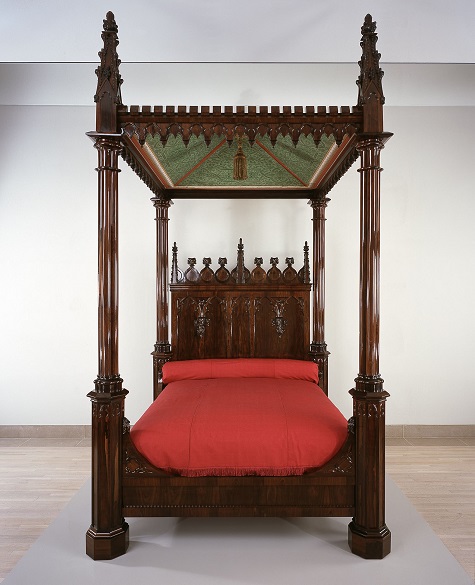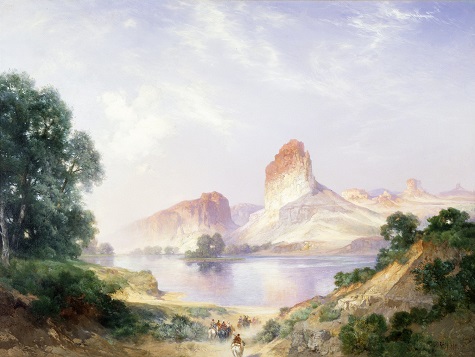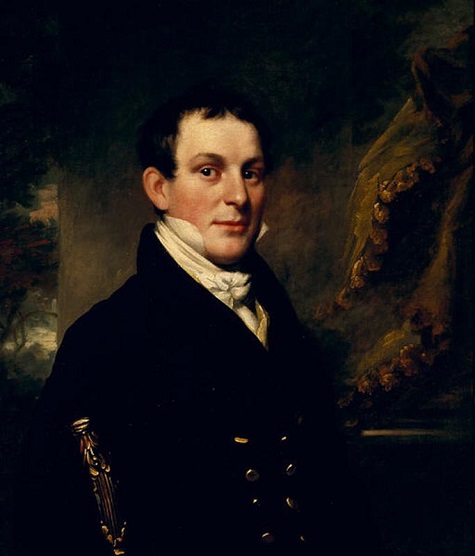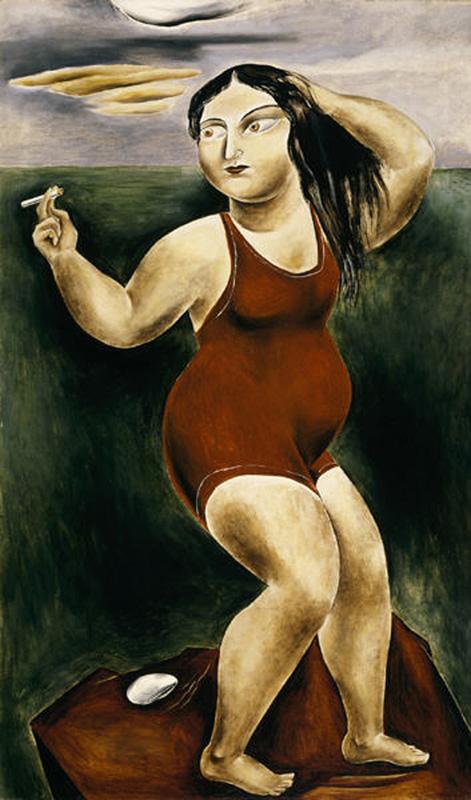Happy Independence Day! Many of you likely have exciting activities on your agenda today, like proudly parading through the streets, chowing down on some backyard BBQ, watching the night sky illuminate with sparkling bursts of color, or all of the above. For those of you in need of some balance between raucous outdoor festivities and quieter, more subdued plans, today is a great time to visit the DMA and stroll through the American art in our collection. The Museum is open today from 11:00 a.m. until 5:00 p.m.
To celebrate the array of differing landscapes and perspectives that make up the United States, here are a few works from American artists that illustrate various scenes and slices of life in our country.
Small towns:
- William Christenberry, “White Door, Near Stewart, Alabama,” 1980, EverColor photograph, Dallas Museum of Art, gift of DMA Friends of Photography, courtesy Pace/MacGill Gallery, New York, 1998.82, © William Christenberry
- Coreen Mary Spellman, “Old Muscatine on the Mississippi,” 1942, intaglio, Dallas Museum of Art, gift of Helen, Mick and Thomas Spellman, 1994.124
- Omar Raymond Carrington, “Village Barn Towers,” date unknown, watercolor, Dallas Museum of Art, George T. Lee Purchase Prize, Southern States Art League Exhibition, 1945, 1945.25
- Zoltan Sepeshy, “The Whole Town,” 1947, egg tempera on Masonite, Dallas Museum of Art, Dallas Art Association Purchase, 1950.92
Big cities:
- James Swann, “Night in Chicago,” 1940, drypoint, Dallas Museum of Art, gift of the Friends of Art, Former Dallas Artists, 1943.6
- George Taylor Plowman, “In San Francisco,” 1905-06, mezzotint, Dallas Museum of Art, gift of Mrs. A. E. Zonne, 1942.37.1
- Paul Cornoyer, “Afternoon in Madison Square,” 1910, oil on canvas, Dallas Museum of Art, Dallas Art Association Purchase, 1914.1
Towering mountainscapes:
- Bertha M. Landers, “Cheyenne Mountains,” 1941, lithograph, Dallas Museum of Art, Elizabeth Crocker Memorial Prize, Twelfth Annual Dallas Allied Arts Exhibition, 1941, 1941.6
- Ernest Blumenschein, “Mountains Near Taos,” 1926-34, oil on canvas, Dallas Museum of Art, gift of Helen Blumenschein, 1960.145, © Estate of Ernest Blumenschein
- Bill Bomar, “Red Mountains,” 1952, oil on canvas, Dallas Museum of Art, E. M. Dealey Purchase Prize, State Fair of Texas Art Exhibition, 1952.42
Seaside scenes:
- Alfred Thompson Bricher, “Seascape,” c. 1885-90, oil on canvas, Dallas Museum of Art, bequest of Margaret M. Ferris, 1990.151
- Maurice Brazil Prendergast, “Beach Scene,” c. 1907-10, oil on panel, Dallas Museum of Art, gift of Mrs. Wilson Schoellkopf, 1962.23
- John Frederick Kensett, “Newport, Rhode Island (Beacon Rock),” 1982, oil on canvas, Dallas Museum of Art, gift of Mrs. Eugene McDermott, 1994.6
Deserts and dry lands:
- William Lester, “Yucca and the Prickly Pear,” 1941, lithograph, Dallas Museum of Art, gift of A. H. Belo Corporation and The Dallas Morning News, 1986.110, © The Estate of William L. Lester
- Alexandre Hogue, “Drouth Stricken Area,” 1934, oil on canvas, Dallas Museum of Art, Dallas Art Association Purchase, Courtesy Cline Fine Art, New Mexico, 1945.6, © Estate of Alexandre Hogue
- Harry Carnohan, “West Texas Landscape,” 1934, oil on Masonite, Dallas Museum of Art, Neiman-Marcus Company Purchase Prize, Seventh Annual Dallas Allied Arts Exhibition, 1935, 1935.2
Lush green views:
- Edward Burgess Butler, “O’er Hill and Dale,” 1920, oil on canvas, Dallas Museum of Art, gift of Mr. A. M. Matson, 1921.4
- George Inness, “Summer Foliage,” 1883, oil on canvas, Dallas Museum of Art, bequest of Joel T. Howard, 1951.9
Everyday people:
- Amelia Urbach, “The Letter,” 1939, oil on Masonite, Dallas Museum of Art, Kiest Fund Prize, Tenth Annual Dallas Allied Art Exhibition, 1939, 1939.3
- Olin Herman Travis, “Head,” c. 1930, lithographic crayon, Dallas Museum of Art, gift of Margaret Scruggs Carruth, 1930.8
- Florence Volk, “Subway News Stand,” date unknown, aquatint, Dallas Museum of Art, Dallas Print Society Fund, 1948.29
- John Butler, “Man in Corncrib,” c. 1933-34, color lithograph, Dallas Museum of Art, gift of the Public Works of Art Project, 1935.17
- Erwin E. Smith, “Frank Smith, Watering His Horse, Cross-B Ranch, Crosby County, Texas,” c. 1909, gelatin dry plate negative, Dallas Museum of Art, Dallas Art Association Purchase, 1959.35.7
- Isaac Soyer, “Art Beauty Shoppe,” 1934, oil on canvas, Dallas Museum of Art, gift of the Public Works of Art Project, 1935.7
And all the critters in between:
- John James Audubon, “Canis Lupus (Black America Wolf),” 1848, hand-colored lithograph, Dallas Museum of Art, Dallas Art Association Purchase, 1949.59
- John Breckinridge Martin, “Possum,” 1910, pastels, Dallas Museum of Art, gift of Mrs. Arthur Kramer, Sr., 1950.95
- Janet E. Turner, “Pelicans,” 1951, color silkscreen, Dallas Museum of Art, Dallas Art Association Purchase, 1960.99, © Estate of Janet E. Turner
- John James Audubon, “Spermophilus Douglassii (Two Douglas Squirrels),” 1844, hand-colored lithograph, Dallas Museum of Art, Dallas Art Association Purchase, 1949.62
- William Lester, “Cat on Fence,” 1947, oil on board, Dallas Museum of Art, The Barrett Collection, Dallas, Texas, 2007.15.43, © The Estate of William L. Lester
- Janet E. Turner, “Some Past Is Present,” 1957, aquatint and silkscreen, Dallas Museum of Art, gift of the artist, 1960.100, © Estate of Janet E. Turner
Hayley Caldwell is the Communications and Marketing Coordinator at the DMA.
